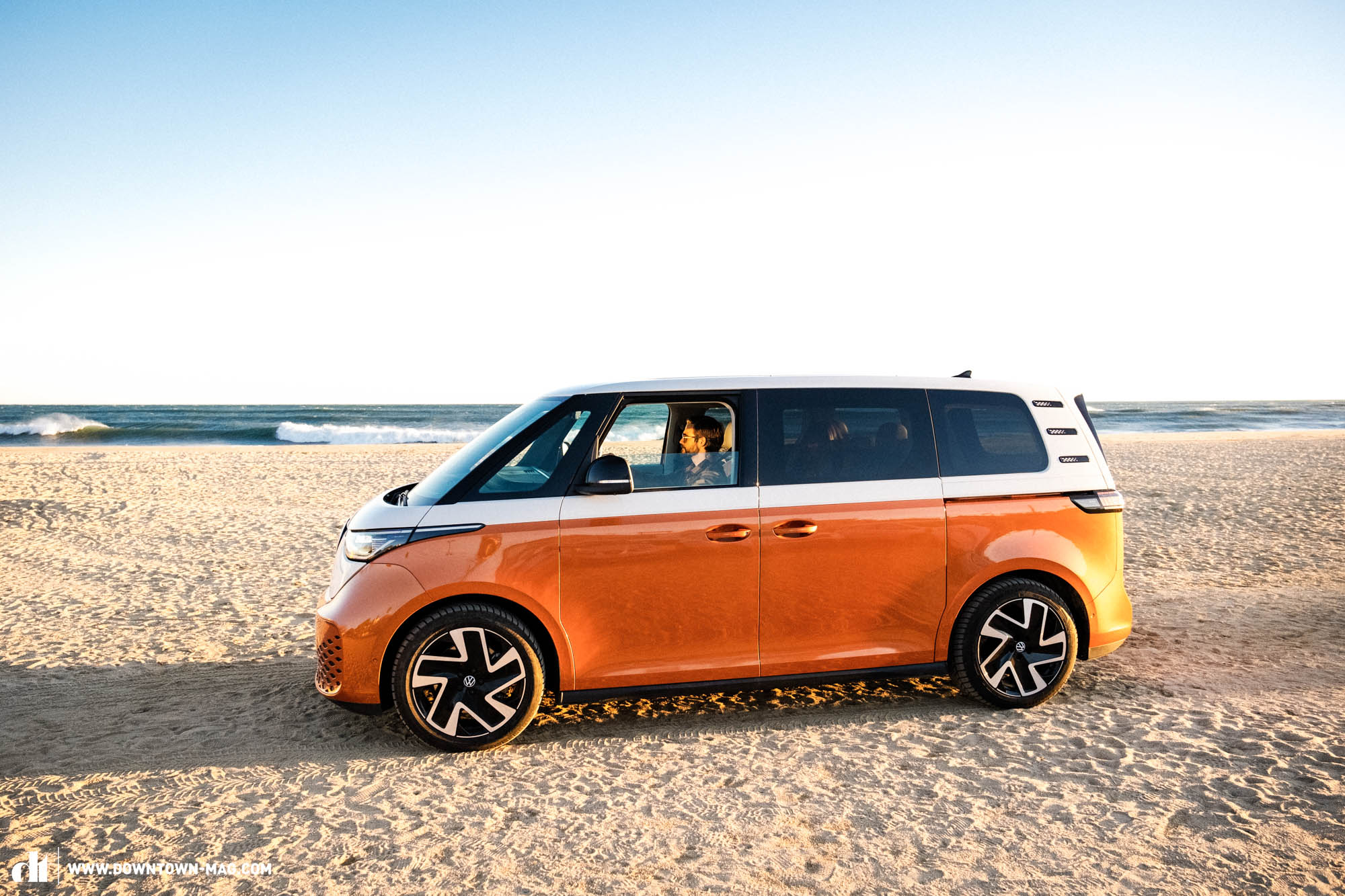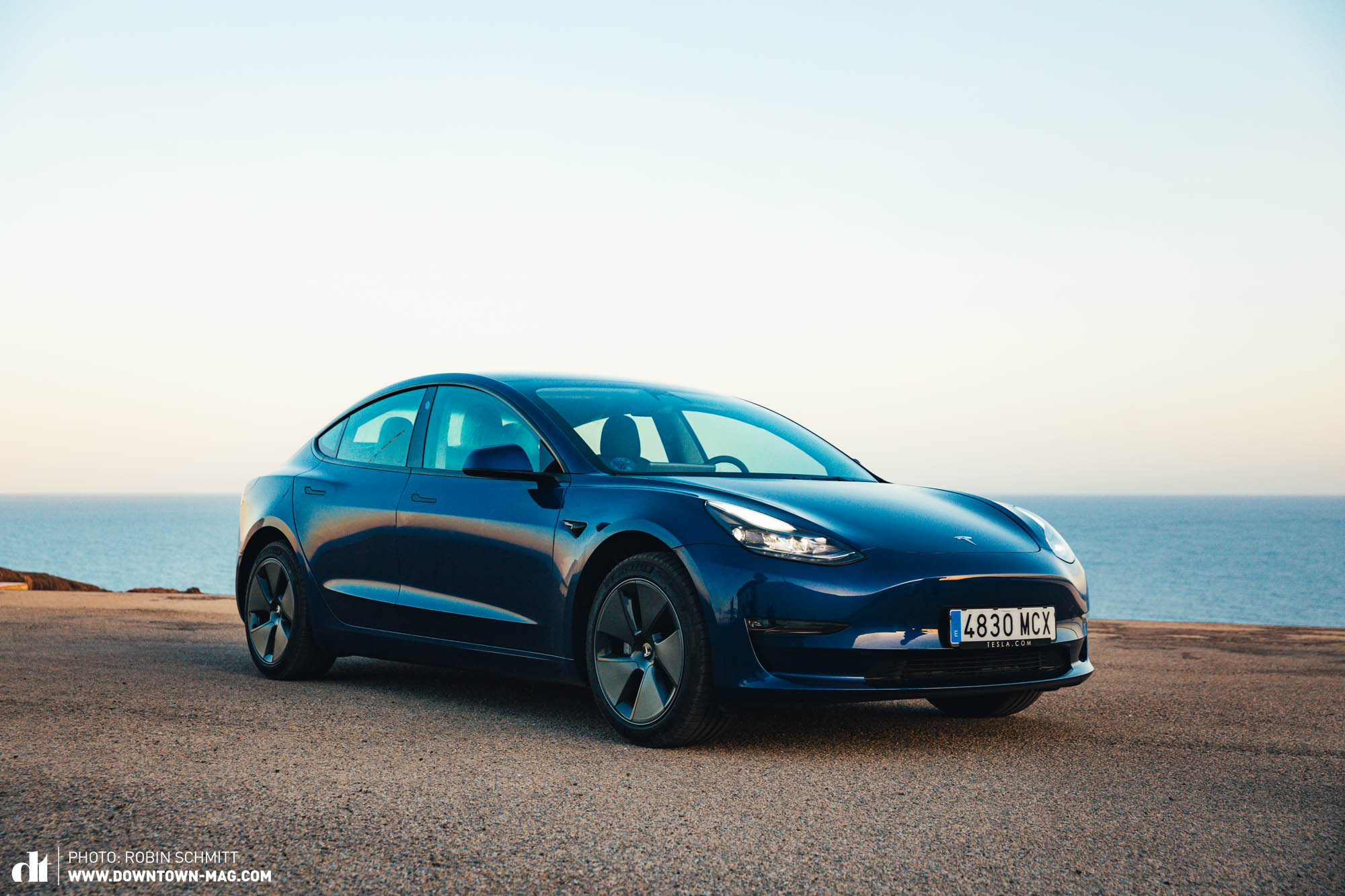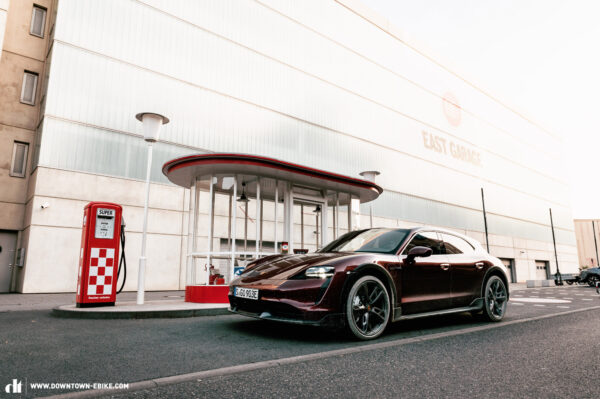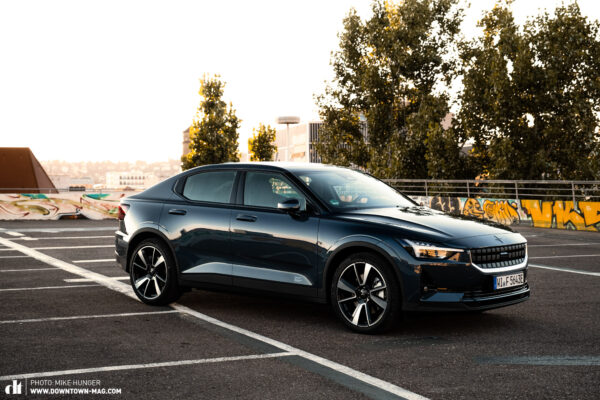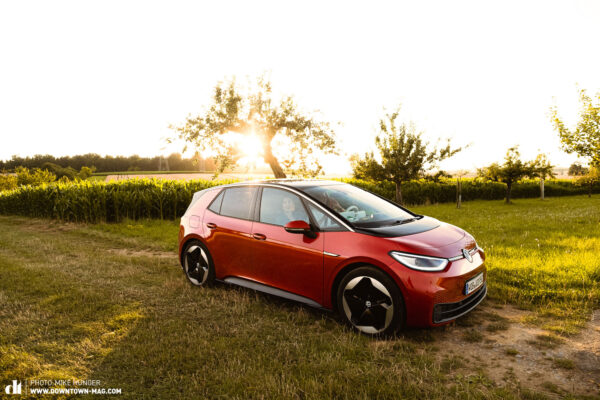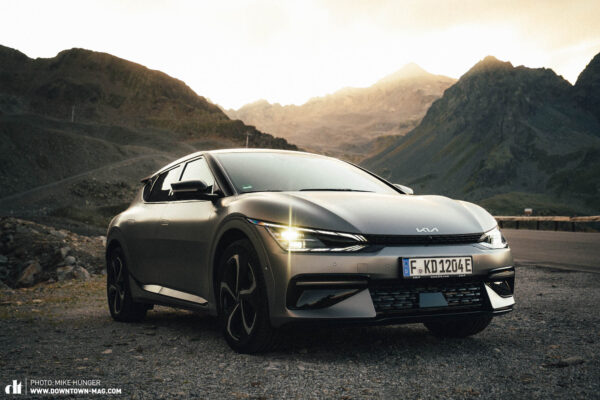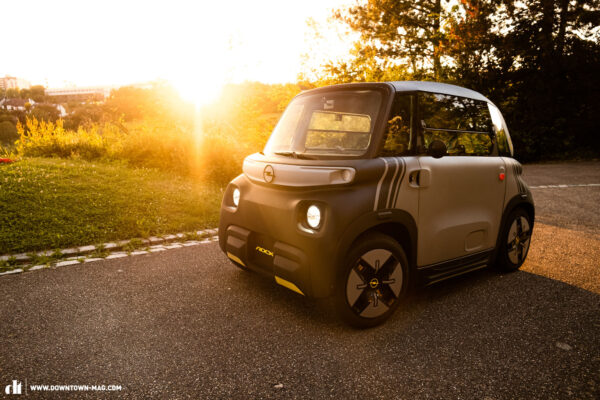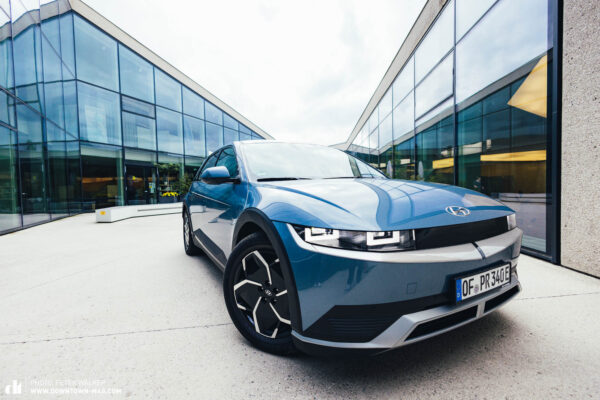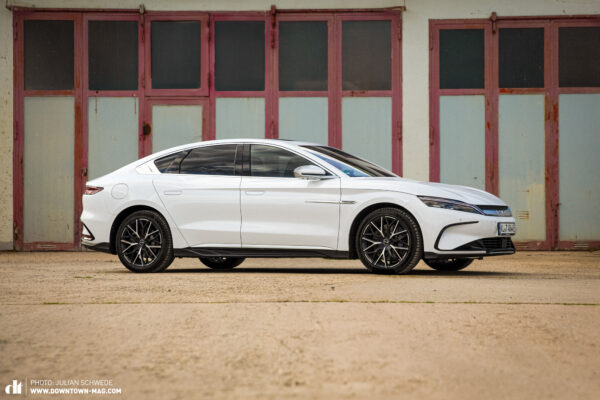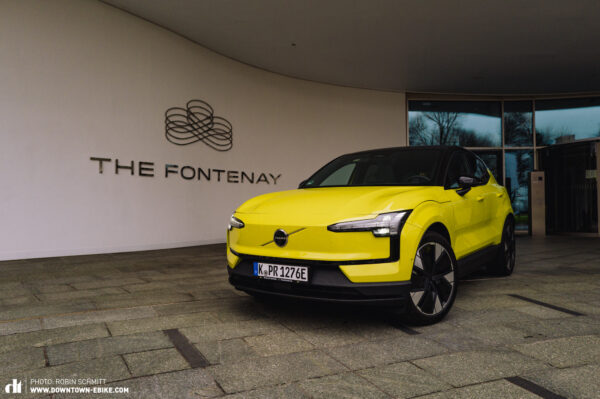Electric cars are booming, along with prejudices and half-truths. What should you look for when buying? Which models disappoint, and which deliver? Our big EV group test is here to help you figure what you need, ask critical questions, and route up marketing hype and greenwashing. By doing so, you can avoid buyer’s remorse and find EV happiness.


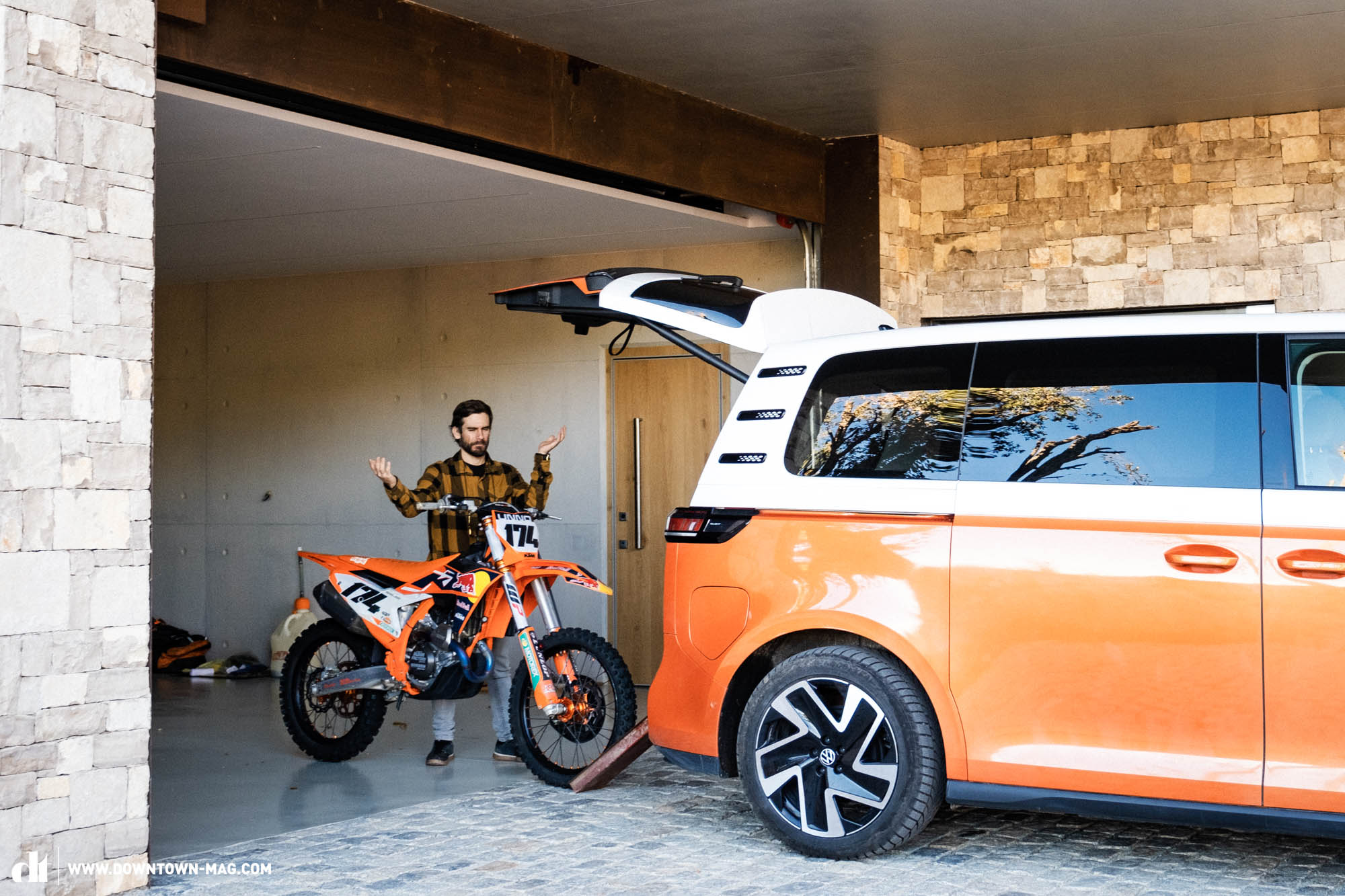
Heaven and hell have never bunked so close as they do with electric vehicles. One person can burst with enthusiasm and excitement while the other is downtrodden with disappointment or disenchanted as they talk about their EV experiences. Surprisingly, that makes sense! Choosing the right electric vehicle is an extremely subjective matter, heavily dependent on your personal needs and individual use case – more so than with a combustion-powered vehicle. If you ignore this, an electric car can get on your nerves even if it’s got the longest range and the fastest charging speed. It can be a climate killer, too! Electric cars, especially, provide the automobile industry with fertile ground for greenwashing and misleading claims, artificially giving you a clear conscience to do precisely the opposite of what you actually intended. More isn’t always more, especially not with electric cars.
Our comprehensive EV buyer’s guide is here to disseminate vital information, show you what you should definitely look for, give you our Tops and Flops, and provide clear recommendations, even if they go against everything you might have heard from many conservative car magazines or influencers.

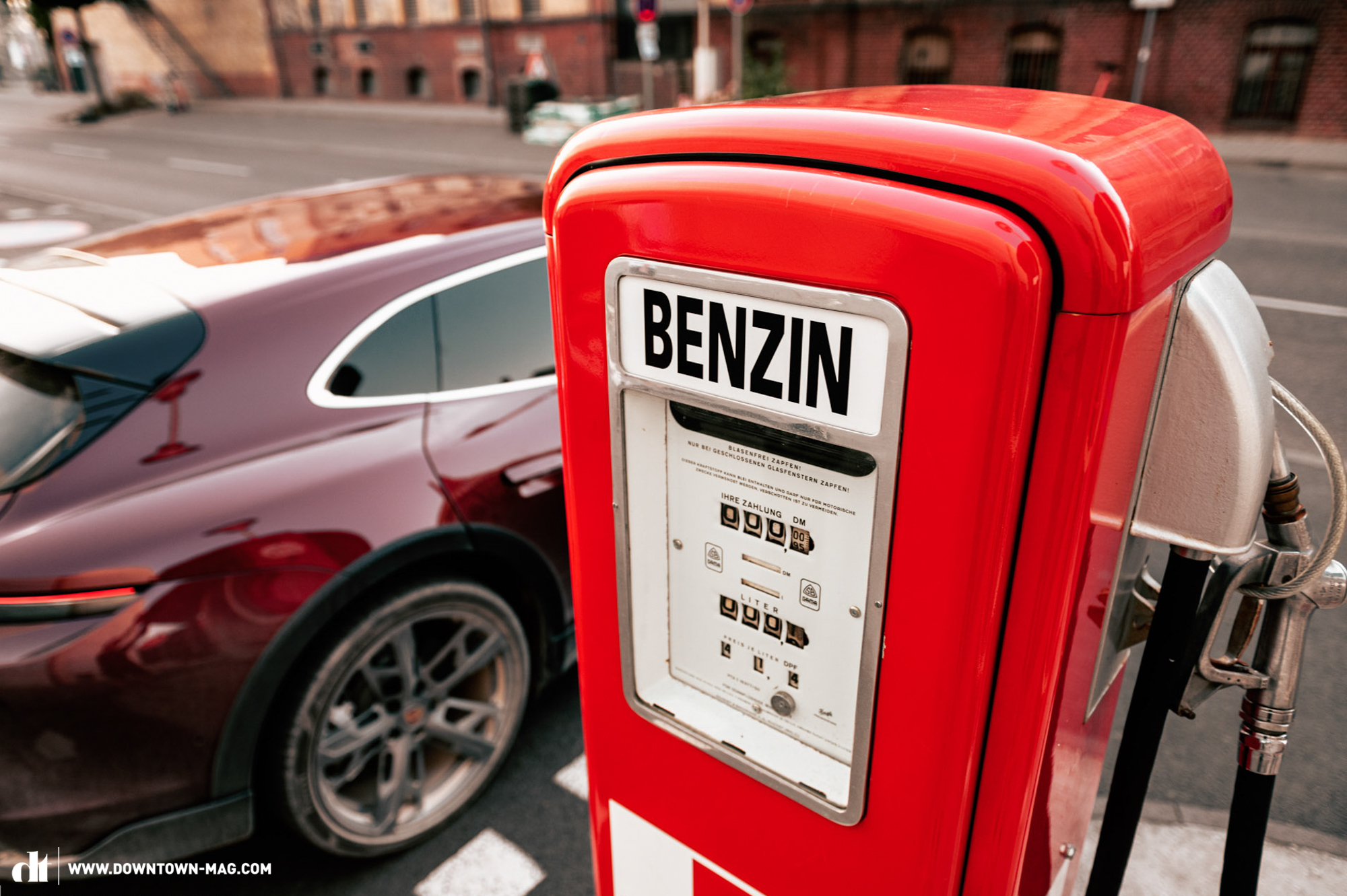

The electric vehicle market is full of opportunities and risks for both the big players and newcomers.
EVs are ringing in a new era of (auto)mobility and represent the beginning of a fundamental shift. Not just in terms of infrastructure but also in view of brands, use cases, vehicle development, business models, and (claimed) emissions-free mobility. It’s a huge opportunity for new and many still unknown brands like Rivian, Lynk & Co., and Nio to establish themselves with exciting distribution models or refreshing marketing campaigns. At the same time, brands like KIA, Hyundai and Honda are taking the opportunity to reinvent themselves, putting the other established giants under pressure in terms of design as well as performance. Added to that is an entirely new generation of innovative, compact/micro mobility solutions from brands like Microlino, City Transformer, and XEV, providing a rational yet charming answer to many urban challenges. Key technologies vital to a holistic user experience are changing, too. Smart software is becoming increasingly important, and the EV sound design as well as user experience have gotten a whole new meaning. Electric cars can – and must – be rethought because they open new possibilities, and their value perception is dependent on completely different factors. For example, electric cars are becoming mobile batteries and power banks for outdoor activities or jobs, even mobile cinemas and game cars.
Despite generous subsidies, EVs are turning mobility into an elitist pursuit: for many, individual mobility is becoming unaffordable! This isn’t just because of rising energy costs but also due to the costs of EVs, especially their batteries. The prices of entry-level models have almost doubled: it’s impossible to find an electric car for less than € 20,000. Even Dacia’s most affordable model starts at € 22,550. All the while, climate bonuses, subsidies, and the more than questionable emissions certificate trade are all meant to stimulate the market. Unfortunately, whether this actually benefits the climate and how much of it is simply justification for consumerism often falls by the wayside.
An overview of our electric vehicle test field
There are countless ways to tackle your daily routines: according to estimations 90% of all Mercedes G-Classes get driven on similar terrain and for similar distances as VW Polos. In the city, through the countryside, and occasionally on highways. In other words, comparing categories doesn’t make much sense with a new type of vehicle, which electric cars are. Rather, you must look at the bigger picture, and figure out what it is you’d like to achieve with the purchase of an EV. The reason is that, in times of home office, structural changes, and rising costs, cars have become dispensable, taking on a different, less important role in our lives. If it’s your first electric vehicle, you’re likely to have a lot of questions and little personal experience to draw from. What are electric vehicles capable of? Can I replace my current combustion-powered vehicle, or will it become my second or third car, functioning as an alternative?
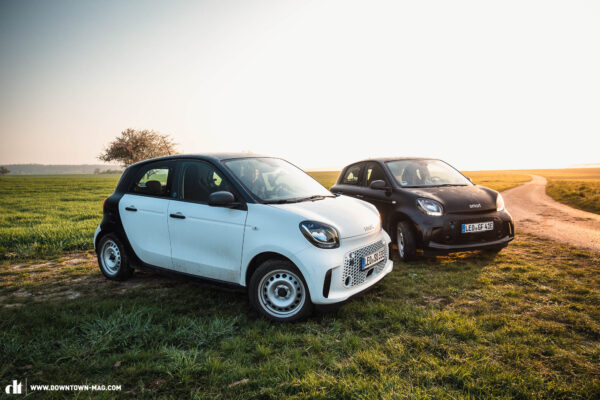
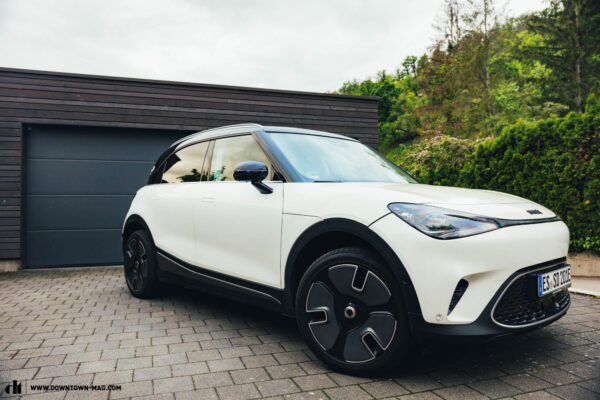

Since there are huge differences between individual electric vehicles, with dimensions still being the most obvious, we compiled our initial test field in such a way as to give you an overview of the market and guide you in buying your first EV. This article is intended to form the basis of a comprehensive electric car buyer’s guide, which we build on and refine continuously. As such, it will get updated regularly, making it worthwhile to revisit often.
Even if most people love graphs, tables and lab values, we deliberately chose not to include a table with acceleration, power, charging speed, and battery capacity figures. Our reason for doing so is the fact that, considered in isolation, these values have little to no meaning. It’s much more important to us, to ask questions that we can answer in the individual EV reviews and in this buyer’s guide.
- How much acceleration do you need at which speed?
- How much of its power can the EV unleash safely, and is it fun?
- How long can it sustain the maximum charging power, and does it even need fast charging capabilities in day-to-day life?
- How far will you drive in the EV on a regular basis, and how much electricity do the motor and your driving style consume?
- Does the navigation system find the best charging stations, and does it integrate them into its route planning?
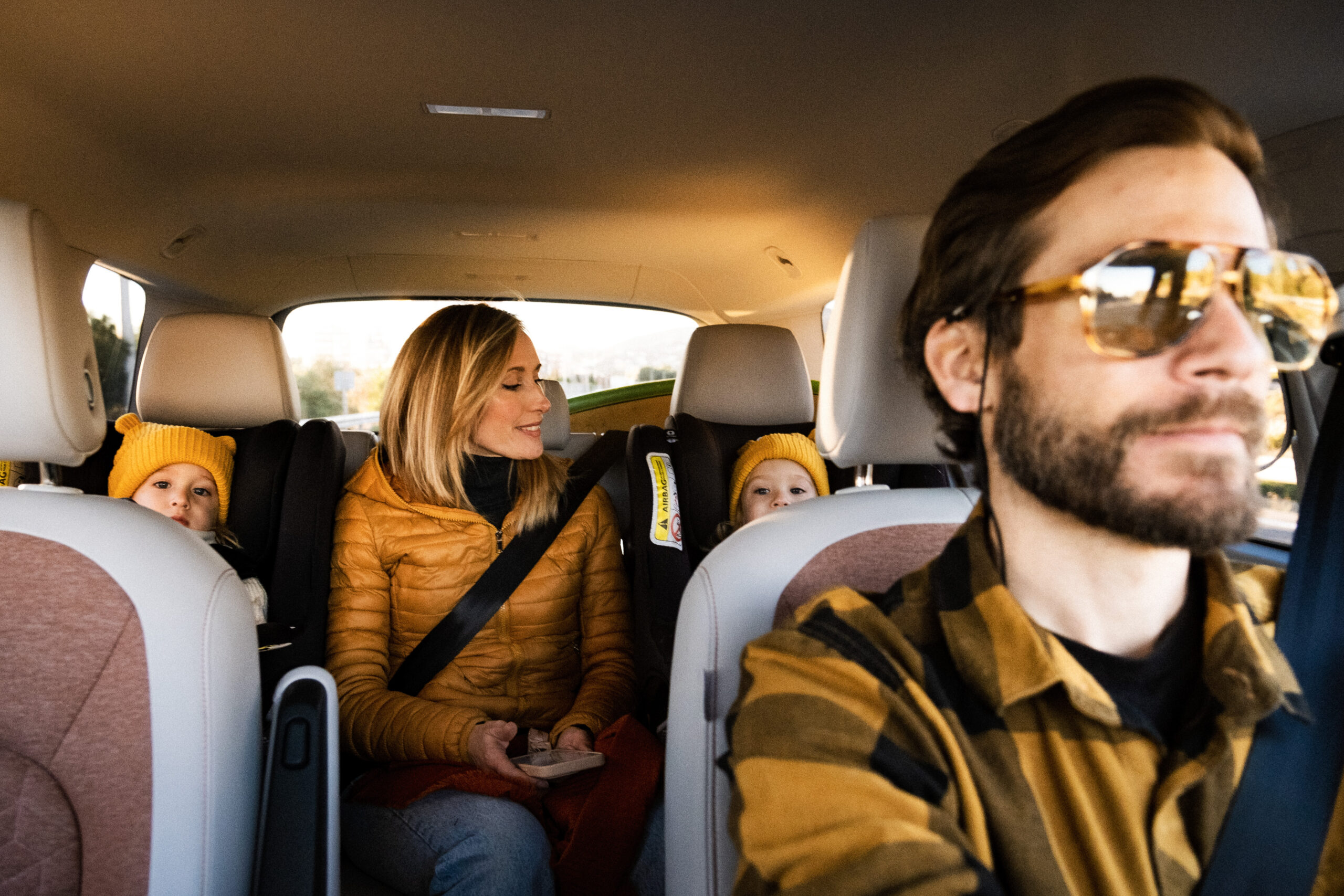
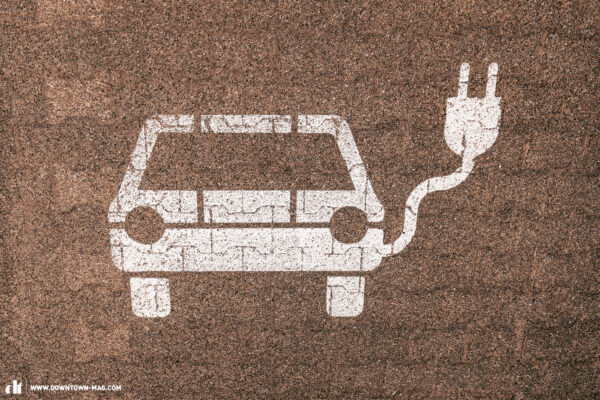
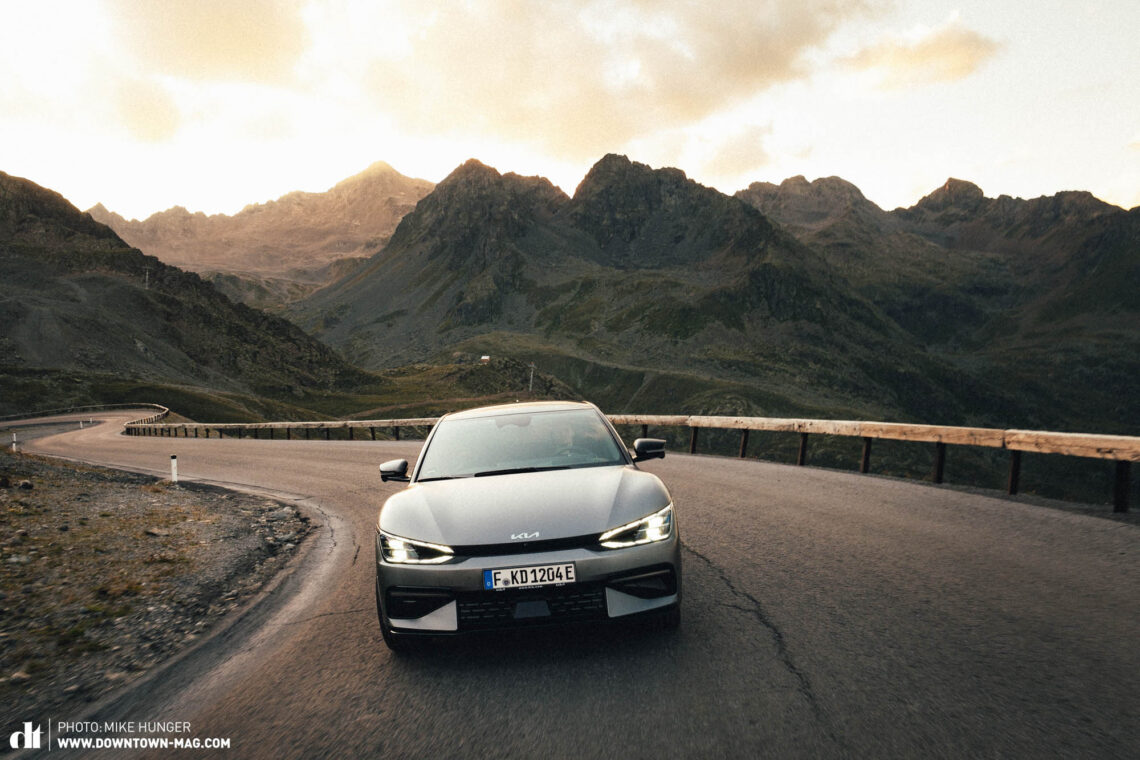
Often, the things that matter in day-to-day life aren’t as obvious as you might think. We’re not satisfied with superficial questions or easy answers. It’s crucial that we ask the right questions, helping you avoid buying the wrong car and making the most of your investment.
We’re getting ahead of ourselves, but, ultimately, there is no such thing as the one best EV. Since individual requirements and use cases are far more decisive than with a combustion-powered vehicle, it would be wrong to make a sweeping recommendation. It’s due to this that the points and matrix-based ratings systems you’ll find in other magazines often don’t align with reality.
DOWNTOWN agenda 2030
Instead of exasperating buyer’s (range) anxiety, it’s vital to work out and explain what really counts. And that’s exactly what we want to do. At DOWNTOWN, we’ve made it our mission to help shape the future of urban life and mobility proactively. Naturally, this includes electric cars as much as it does ebikes and everything in between. We aim to provide inspiration for new possibilities and lifestyles, question current developments, give impetus and set trends – all to make the metropolises and suburbs of this world more liveable, humane, exciting, and just better. No greenwashing – whether dogmatic or hypocritical – just realistic, pragmatic, and tangible advice. And we want to have fun doing so, otherwise life would be quite a drag, wouldn’t it?
As long-time readers of our other magazines – ENDURO, GRAN FONDO, and E-MOUNTAINBIKE – know well, we’ve loved doing things differently and setting new trends ever since publishing our very first article.



Hero or dumb consumer?
There are significant parallels between the world of electric cars and the success of ebikes, which started a lot sooner and fared a lot better, without any help from subsidies. The brands and media surrounding both are in a constant battle to outdo each other with superlatives: the longest range, the fastest charging time, the highest level of entertainment, and the most features. Of course, it’s all very exciting, but you’ve also got to put things into perspective. Is it all about maximum tech and innovation purely for innovation’s sake – or about reducing our carbon footprint, at least to some degree?
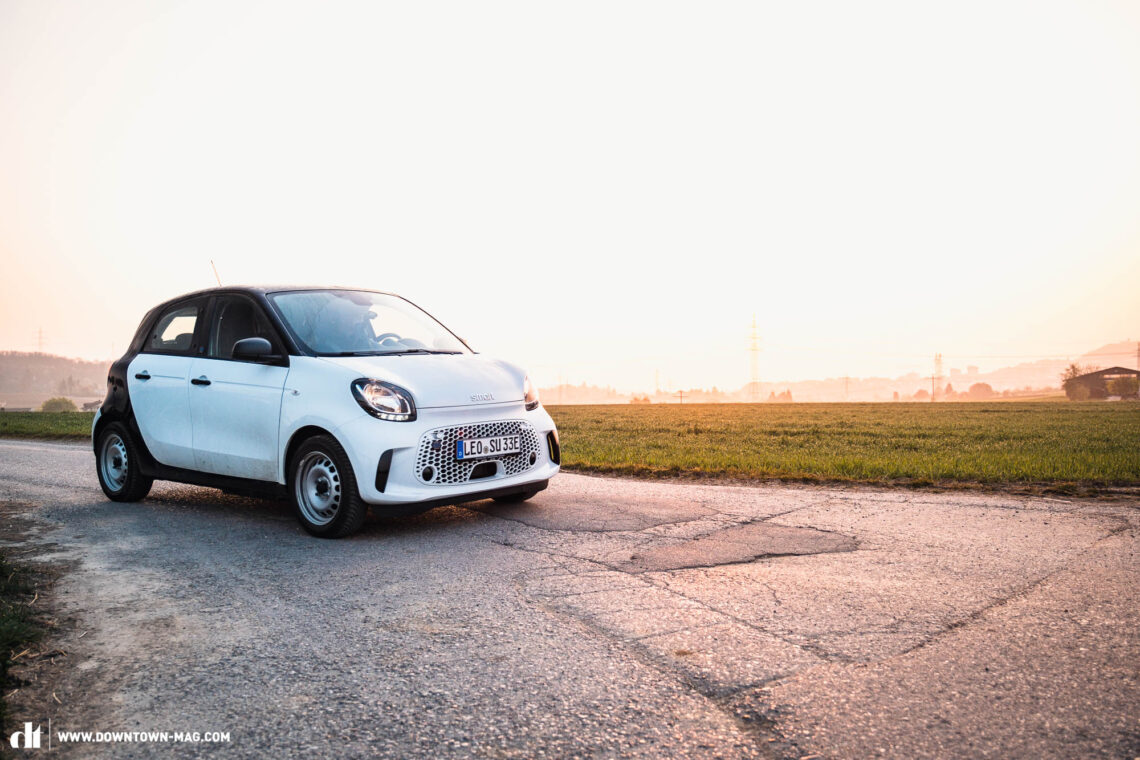
What were our reasons for wanting to revolutionise mobility again? Without question, human beings have the tendency to overengineer and to overequip themselves. Like wearing a Patagonia jacket that was designed to withstand Himalayan conditions just to survive a light drizzle on a stroll to the bakery, we buy (electric) cars that are capable of several times that what we actually use them for. Of course, we need advancements in technology and new solutions to tackle the problems of this world. However, there are a lot of existing technologies that we can use to make a significant impact today. Rightly, some brands have started to remove the word “sustainable” from their marketing campaigns – like Smart did when introducing the new Smart #1 – since these products exist purely because there is a demand from potential customers who simply think they’re exciting and cool. Not because any of them are seriously concerned about the climate or the preservation of scarce natural resources. That is a key question that not just the vehicle manufacturers but also us consumers, who ultimately vote with our credit cards, must ask. Do we want new technology with a new image but no real difference to how it impacts the world – or will we make a tangible difference?
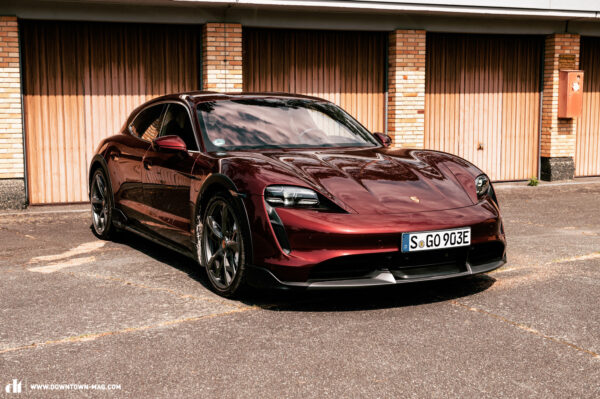

Your personal buyer’s guide – Which is the best EV for you?
Before we get into the nitty gritty of what can make a good electric vehicle and what you should look for personally, it’s vital that, as a potential EV buyer, you ask yourself how you’re going to use the vehicle and what your requirements are. It’s only then that you can find an electric car that you’ll be happy with, or, perhaps, that you just don’t belong to the electric car target group, and that you’ll be better off with a classic internal combustion powered model. Just like with the supposedly best, highest quality, most expensive shoes, if the EV doesn’t fit, it’s not worth anything to you and won’t get you far in day-to-day life.
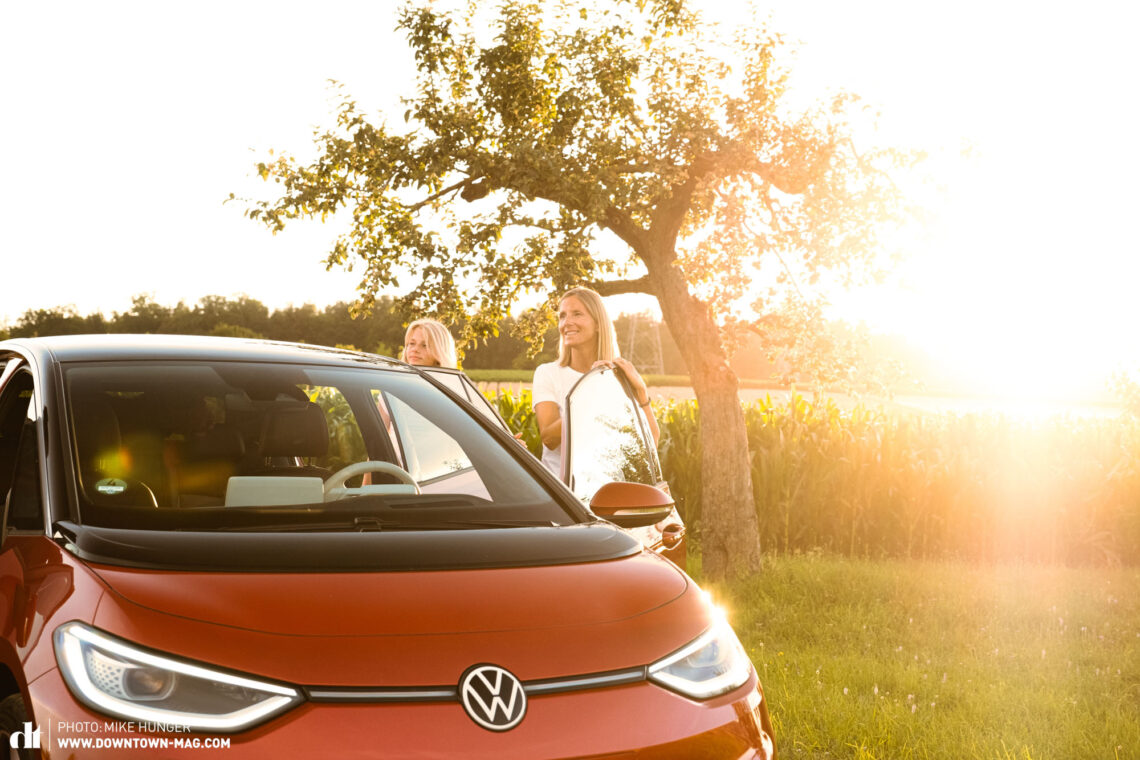
When reality kicks in – Our test methodology and test drivers
If one thing is certain, it’s the fact that the EVs on test didn’t have it easy. While many blogs and magazines just have one person testing a car, or it must simply prove itself on a standard, pared down test track, we unleashed the madness of everyday life on them. All the EVs were tested over a 2-week period and driven by at least 5 different test drivers, covering from 1,500 to 2,000 km, and faced with everything life can throw at them: tantrum-throwing kids, moving furniture, shopping, high speeds on the German Autobahn, winding mountain passes in the Alps, countryside overtaking manoeuvres, transporting bikes, traffic jams, early morning commutes in every kind of weather, and dinner dates in the city. And all that in and around Stuttgart, Germany, the birthplace of the automobile, and well known for its busy roads.
Since most households share a car, and it doesn’t usually get driven by just one person, we didn’t simply let most of our editorial staff have a go. Friends and family were also allowed in the driver or passenger seat: mothers, fathers, daughters, sons, e-nerds, electric car veterans as well as newcomers, old-timer fans, sports car enthusiasts and connoisseurs. Having such a diverse and wide range of test drivers and conditions goes a long way in giving us a comprehensive picture.

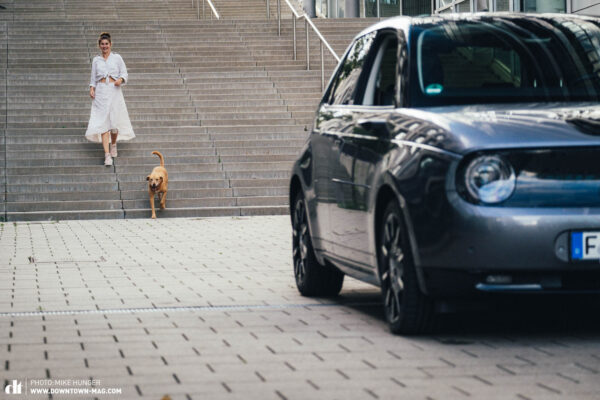

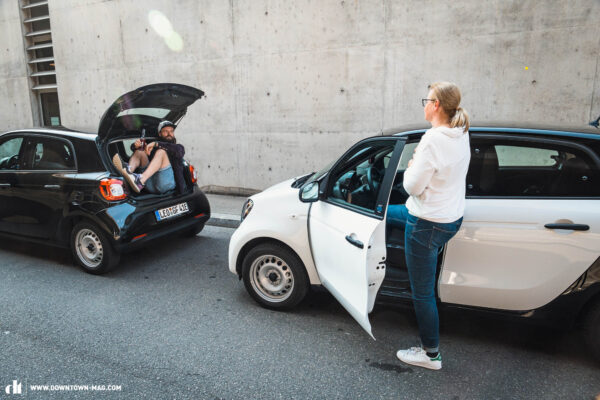

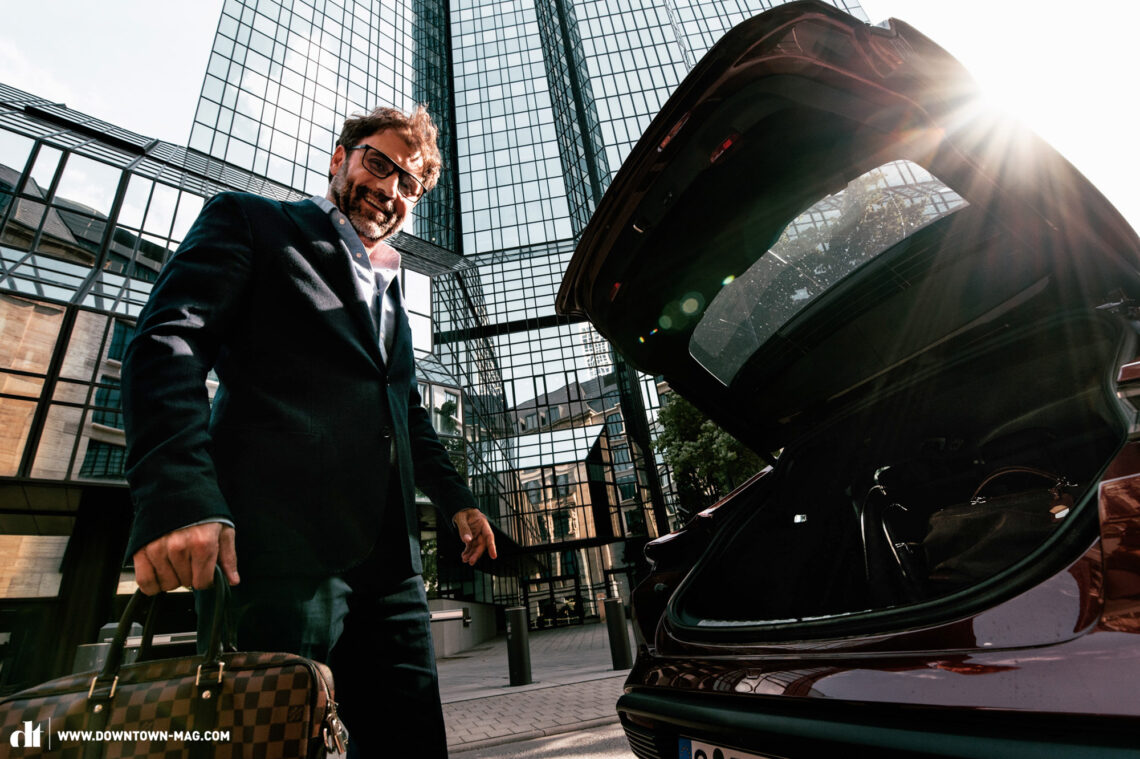

I want my EV to be uncomplicated and intuitive to operate. I found the design of the iconic yet modern Fiat 500e 3+1 the most appealing, making it my first choice. It offers more than enough range for my daily commute and the occasional outing. The shortcomings in terms of comfort and assist functions are things I’m willing to overlook, as long as it’s fun to drive!

I still belong to the fun-seeking target group and want a car that offers fast acceleration and quick cornering. Combine that with a cool look and I couldn’t be happier. The Honda e is my favourite due to its great design, which appeals to me emotionally, and that go-cart feeling, which makes it a fun city runabout with a big must-have factor. Since I can recharge the battery at home and at the office, the charging speed doesn’t matter that much. I was one of the first Taycan owners and drove it for several years, but in day-to-day life, I don’t need anything more than the Honda e!

I was most surprised by the KIA EV6 – more so than by the Porsche Taycan. Not because of its performance or finish quality, which is worlds apart with the Porsche, but because of its bold design concept, modern interior layout, long-distance capabilities, and the option of using the KIA as a giant, outdoor battery. The electric mobility movement offers brands a unique opportunity to reinvent and reposition themselves. It’s unfortunate that the KIA EV6’s assist functions are so disappointingly slow, and that the overly soft suspension can’t cope with the performance of the motors.

The VW ID.3 offers a good compromise between range, luggage capacity, and excellent assist functions. If the car can chauffeur me on my morning commute to work to some extent, I can start my day more relaxed, as I don’t get as stressed out by the traffic. In the ID.3, the quiet interior lets me enjoy the music without any interference, I’ve got good connectivity, smart route planning including charging stops, a new take on the exterior and interior look, and it sounds cool from the outside.

To me, charging plays a crucial role on an EV. From the battery capacity and charging speed to the inclusion of charging stops in the route planning of the navigation system, a good electric car must offer a coherent package. The KIA EV6 turned out to be my favourite, winning me over with its long-distance capabilities and unique design. It fares just as well on my 200 km commute as it does on a road trip to the Alps.

While the electric Opel doesn’t meet all my mobility demands, I find the concept of the minimalistic approach quite exciting. In an urban environment and with a little planning, the Rocks-e could even function as your only vehicle, though, in that case, it would face tough competition from a cargo bike, which I would prefer. Personally, I own a VW ID.3 since I find it to be the most complete offering currently available on the EV market.

For inner city traffic, I would put design and compact dimensions before range and charging infrastructure. So, the Honda e was my top choice, even though it hasn’t got much going for it rationally and in terms of hard numbers. Emotionally, it appealed to me the most, almost making me feel compelled to spend time in it with its irresistible charisma. From a purely rational perspective, I would choose the VW ID.3 for daily use.

Driving is a must, and it must be fun. For my second car, I don’t care too much about range and size. As such, I like the cute Italian model the most. The Fiat 500e has a story to tell, which I like. It fares well in the city, too.

I want a versatile EV that can fully replace my internal combustion vehicle and allows me to do my shopping just as well as drive away on holiday. The KIA is what I would choose with its long range and fast charging times. However, I wouldn’t opt for the panoramic roof because it limits the headroom too much.

The cute Honda e is my favourite because of its smooth and sporty ride. I value good design and high-quality workmanship that makes me feel protected from the electric motor. If you’re someone who’s sensitive to electrosmog, this is something you might want to consider. I tend to feel unwell rather quickly in some EVs like the humming Smart EQ Forfour. The Honda e also won me over with its manoeuvrability and compact dimensions.

As a mom of two kids and a family with a ton of hobbies, we’re yet to find an electric replacement for our VW bus. The agile ID.3 would be a cool backup option for the city. I was surprised by how easy it is to drive and the new kind of driving sensation it offered. My kids have also grown to love the compact car with its generous interior layout. The excellent assist functions make the ID.3 a great city runabout.
Same features, huge differences – What to look for in an EV
We’re told that the facts don’t lie, but you must consider the context in which they’re viewed and presented. If you’re looking to impress your work colleagues or friends at the bar, you’ll do well with theoretical specs like maximum charging speed, battery capacity, or power. However, if you’re serious about buying a sensible (electric) car for day-to-day life, you’ll have to ask better questions. Just like the kW output of the motor doesn’t necessarily say much about an EV’s driving dynamics and performance, so it is with many other features and functions. For example, lots of buyers look for cruise control and a fast charging speed, but very few of them know that there can be big differences from one brand to the next despite being advertised with the same numbers.
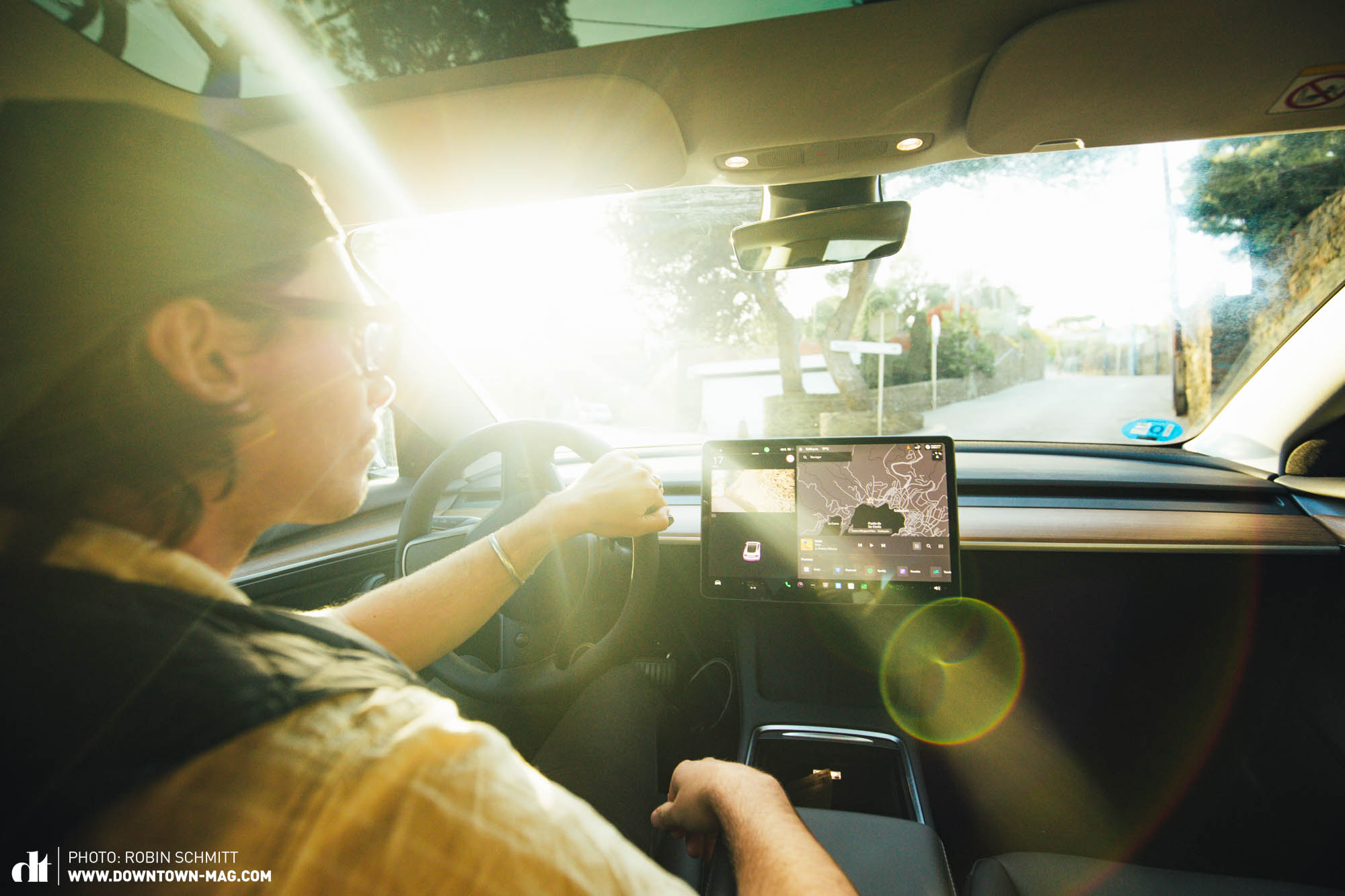
EV basics and glossary – Key terms
We’ve compiled a comprehensive glossary of technical terms and easily understandable definitions surrounding EVs on the DOWNTOWN website, so that you can impress your buddies at the bar, or wax lyrical about their pros and cons to friends and family. Together with our interactive buyer’s guide, it could also help you when chatting to dealers and figuring out which should be your first BEV (just one of the technical terms we cover in the glossary).
Range anxiety – Don’t be fooled!
The term range anxiety was coined as early as 1990 by drivers of the first production electric car, the General Motors EV1. It describes the fear that an EV doesn’t have enough range to reach your destination, leading to frequent and time-consuming charging stops even if they’re not necessary, or the fear that you won’t find a charging station, leaving you stranded with an empty battery.
The least of our fears are based on real dangers, but rather on unknowns and insecurity. You might have too little information to make an accurate assessment of your situation, you’re not aware of your options, or you just haven’t learnt enough about a certain topic and what really counts. We’ll attempt to change all that below, so that you can stop being fooled by irrational fears.
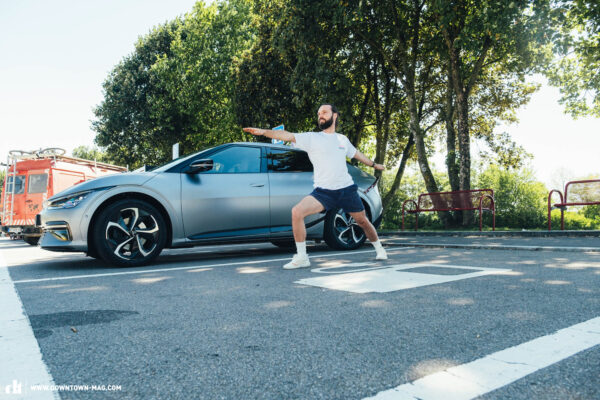
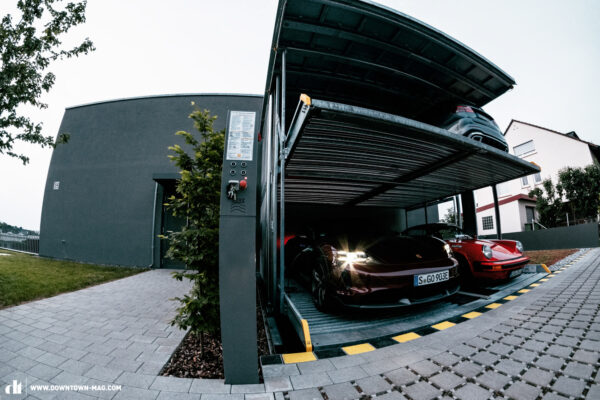
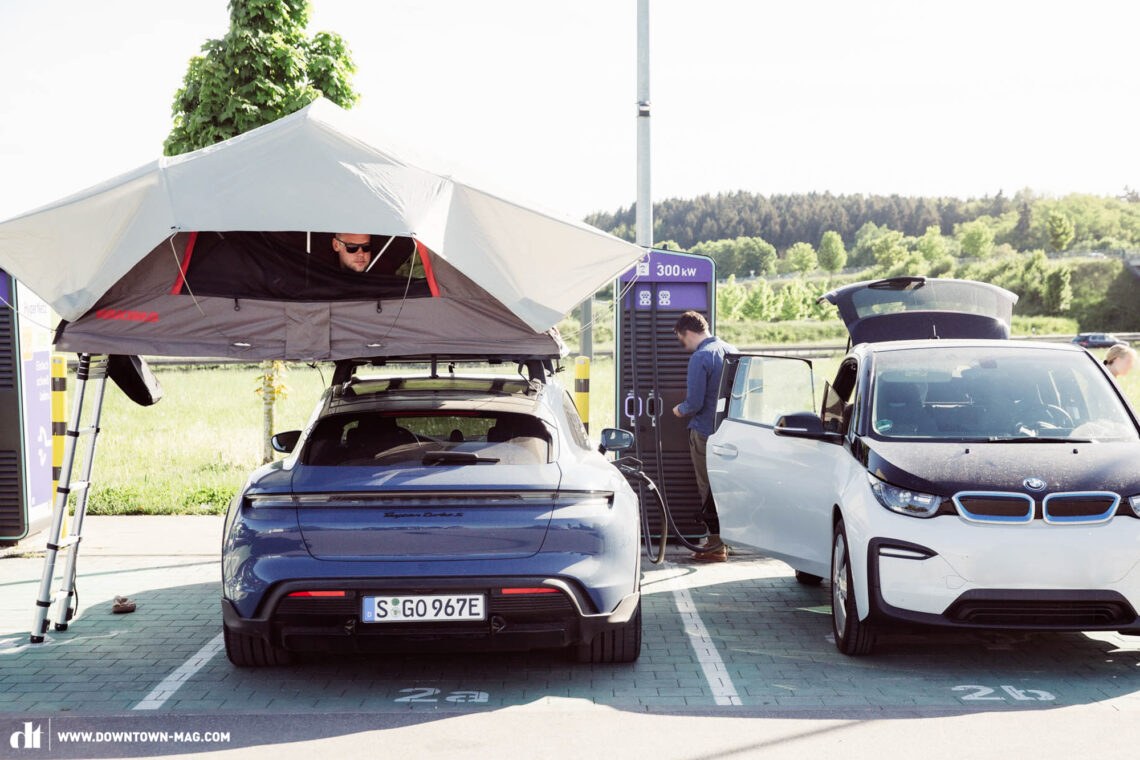
The correct charging strategies and why charging speed is often irrelevant
Before you let yourself be consumed by range anxiety, imagining all the terrible things that could happen, you should ask yourself how you’re going to use the car and what your individual requirements are. Simply by doing that, many of your fears will vanish. Your needs should be the deciding factor, not the latest and greatest tech currently offered on the market. Instead of looking for an electric vehicle with the longest range, or (worse yet) the biggest battery, you should ask yourself:
- How far will I drive the EV on a regular basis?
- Where and in what conditions do I usually drive?
- Where can I charge every day, and how much time have I got to do so?
If you live and work in the city or have a short or medium distance commute, you will seldomly use the full battery capacity. Depending on whether you’ve got a garage with a power outlet, or you can charge at work, you might be able to charge every day, and without having to worry about finding a free charging station. In that case, the charging speed of most electric cars is irrelevant. But it can be a deal breaker on long hauls. With an 800 Volt charging infrastructure and up to 250 kW charging power capability like the Porsche Taycan or KIA EV6, charging can be super quick. With the KIA EV6, that gave us just enough time for a couple of Sun Salutations and other yoga poses. With the Porsche Taycan Turbo S used by the race team of our sister magazine, ENDURO, they didn’t even have enough time for a power nap in the roof tent: it takes just 15 minutes for the battery to go from 10 to 80% capacity!

Fast charging isn’t everything, even on long distances. For example, if you’re on holiday with the family and have young kids, they’ll probably want to take a break sooner than you need to recharge the battery. A little bit of planning goes a long way: you can combine the necessary charging stops with breaks that you need to get some rest anyway. That doesn’t just apply to families but also to commuters and other travellers. In our mad rush to get from point A to B as quickly and efficiently as possible, we simply use rest stops to fuel up and use the toilet instead of actually resting. Yet, the occasional forced break will do a lot of us a lot of good. Often, we just want to get to the destination when we should be enjoying the journey. We should remind ourselves, driving time is also time spent living. So why not spend this time well? (Business) travel times are often calculated without any margin instead of just adding a buffer for the occasional detour, or another day to go sight-seeing when you’re in the area already anyway. Many of us complain that our days are so monotonous, feeling compelled to follow the same routine day in and day out, and not being allowed to stop for a moment and take the time to look around, or just look inwards. Making the switch to an EV is the perfect opportunity to change this habit and add a bit of variety to our lives.
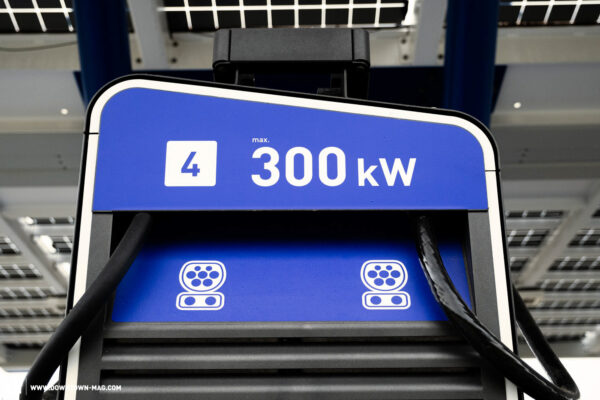
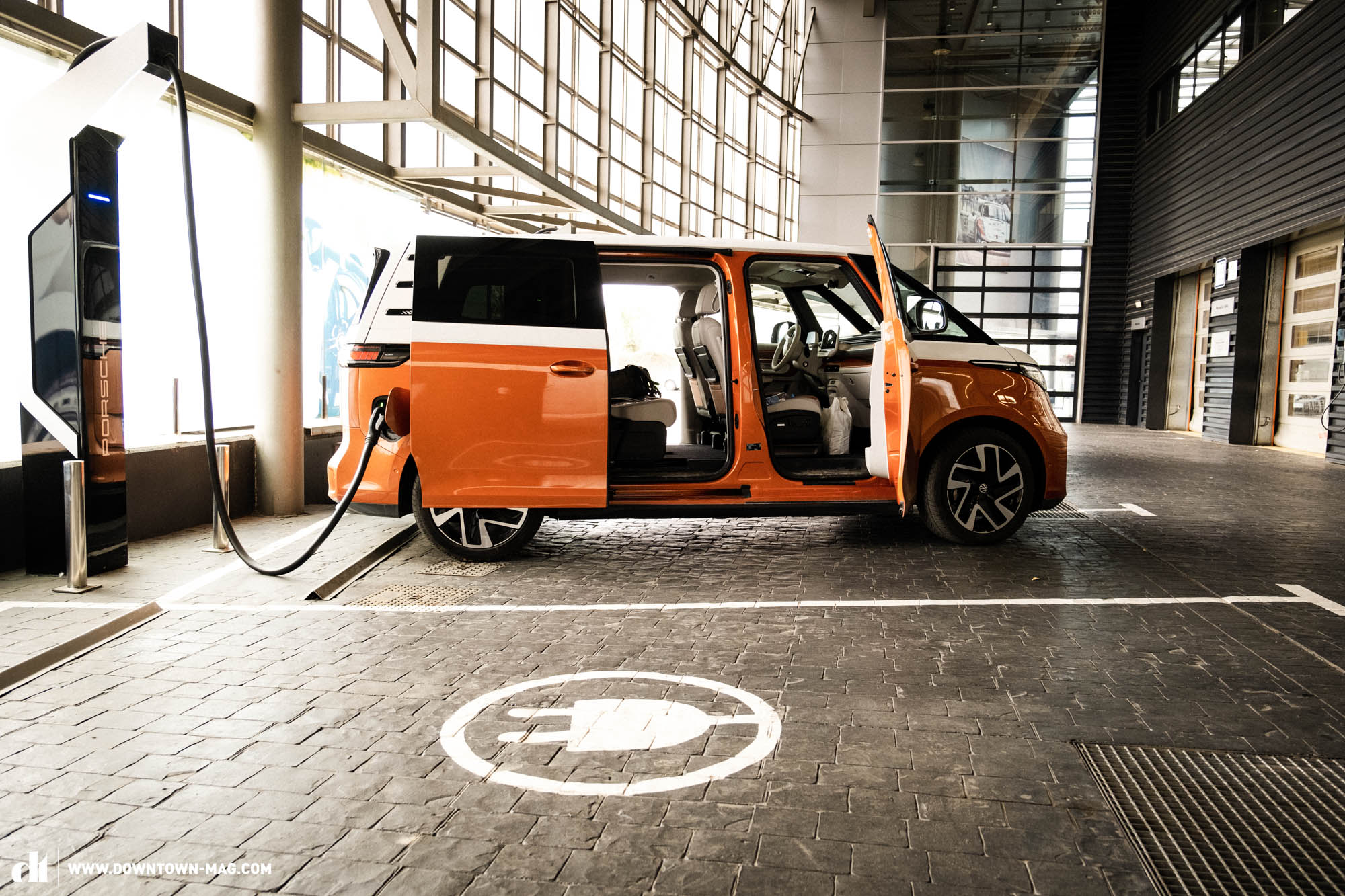
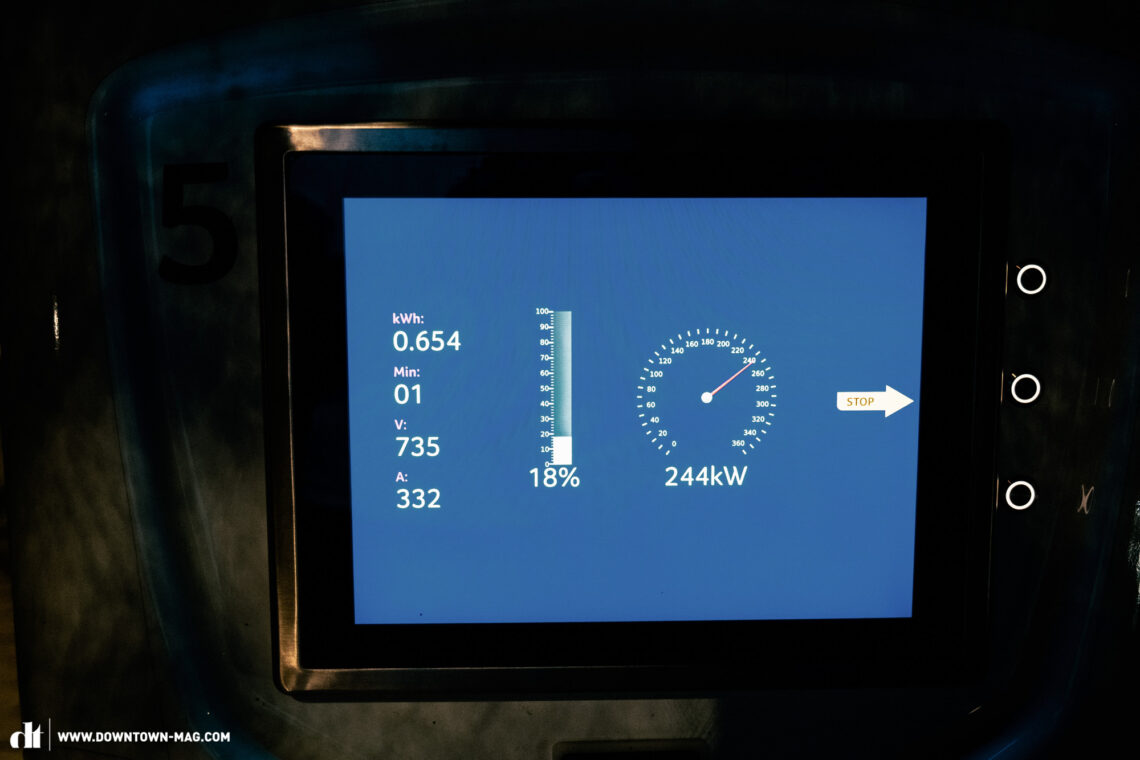
But let’s get back to the facts, and why you shouldn’t let yourself be blinded by them. No matter whether it’s the KIA EV6, Porsche Taycan, VW ID.3, or the Honda e, you’ll hardly ever achieve the maximum charging speed in typical, real-world conditions. The manufacturer’s specs or maximum values can serve as an orientation, but it ultimately comes down to two factors:
1.
The charging station and its output – best of luck finding hyperchargers in the city. And what’s the use of being able to charge at a maximum power of 230 kW when the charging station in the parking lot of the grocery store can’t put out more than 11 kW?
2.
The charging curve of the battery, which shows the battery’s charging capacity along the entire charging cycle. Ideally, you’d want it to be capable of absorbing maximum power for as long as possible. Honda promise a charging power of up to 56 kW. In reality, however, we briefly achieved a maximum of almost 40 kW. On average, the charging power while going from 5 to 80% capacity came in at just 30 kW, give or take. Generally, the charging power gets reduced significantly once the battery reaches 80% capacity, helping to prevent damage. It’s similar with most EVs, even with the luxury models. So, what is the point of 230 kW charging if it lasts for just 2 minutes and then declines rapidly? Instead, you must ask how long the car can sustain the maximum charging speed. But only if fast charging is something you’ll use regularly when you drive. The Honda e is rather far behind the competition when it comes to charging speed and battery capacity, yet it’s a clear favourite amongst our jury because the charging speed was irrelevant during our main field of application.
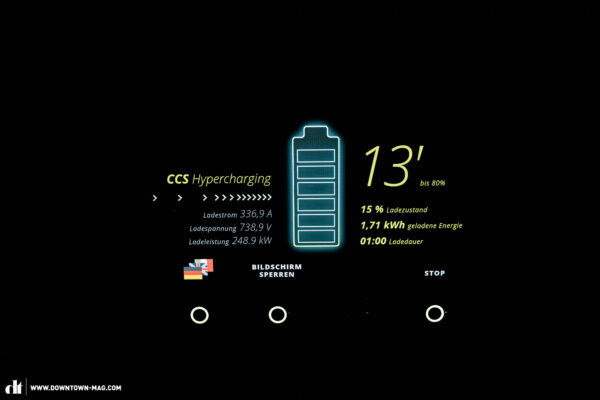

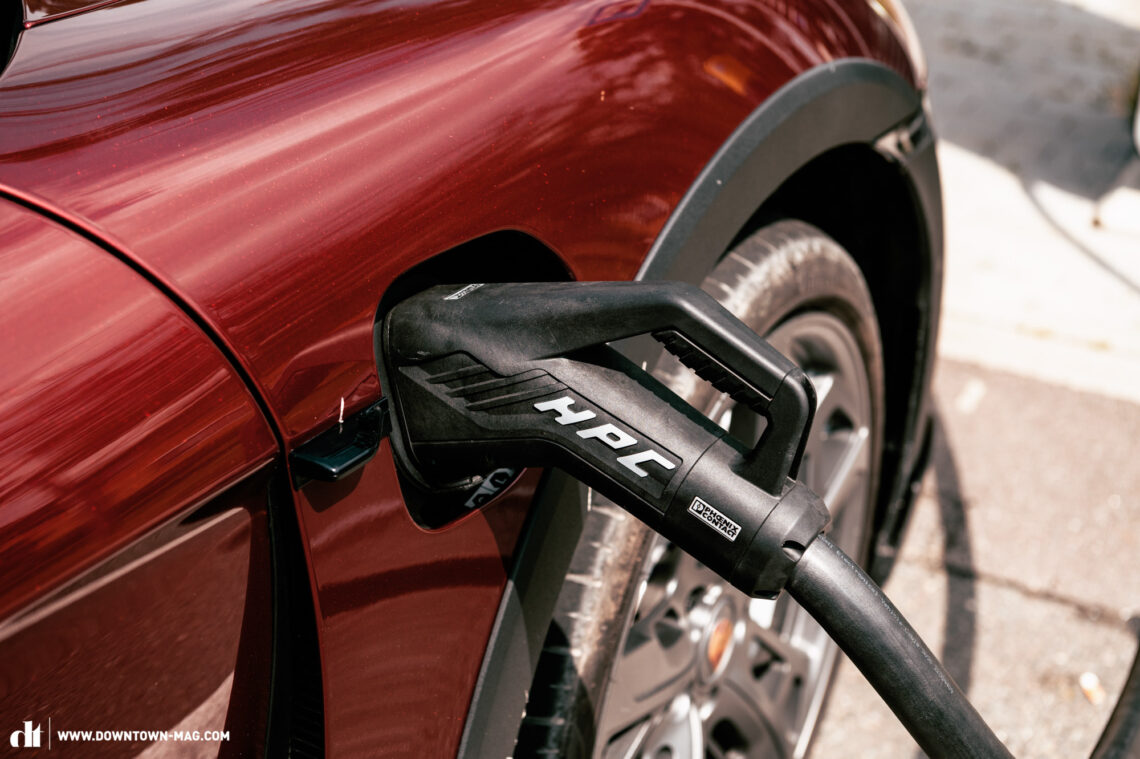
The hardware and battery management system play a decisive role in the EV’s charging curve. However, there are several other very important variables to consider, including the state of charge, battery temperature, ambient temperature, charging station and the number of simultaneously charging cars. With the Porsche Taycan, for example, it’s recommended that you select your desired charging station via the onboard navigation system, since that tells the electric car when a charging stop is coming up and allows it to pre-heat the battery for the fastest charging speed possible. Unless the battery gets pre-heated, you won’t achieve a fast charging time, even if you’re using High Power Charging (HPC). This is particularly the case in winter.
By the way, electric vehicles generally come with two different charging technologies and ports, providing different charging speeds. In Europe, you get a type 2 plug for charging at home (using the appropriate adapter), from a home EV charger, and many charging stations in the city, providing a charging power of up to 43 kW. Interestingly, the Honda e can draw just 6.6 kW, the Polestar 2 achieves up to 11 kW, and the Porsche Taycan can draw as many as 22 kW via a type 2 plug, which can make a marked difference. And it’s not just the charging speed but also the charging losses that differ. The higher the charging power, the lower the losses. In other words, charging from a home EV charger is usually more efficient than charging from a standard household outlet. Depending on the vehicle and the plug, you can get between 5 and 20% charging losses.
Fast charging stations rely on the Combined Charging System (CCS), allowing energy to be drawn at a power of 20 kW to a whopping 350 kW. The highest category of CCS charging power is called High Power Charging (HPC), which requires cooled charging cables and refers to charging stations that can put out from 150 to 350 kW.

How big should the battery be?
Many EVs are available with different battery capacities. Like with an ebike, however, looking at the battery capacity in isolation makes little sense. Instead, you must look at it in relation to the motor and its electricity consumption with your particular driving style. Accordingly, a small battery in an efficient EV with a relatively weak motor could achieve the same or an even longer range than a sports EV or cargo e-van with a battery that’s twice as big. Being able to choose the battery size allows you to achieve your required range. If you go for a more powerful motor, or two motors instead of one, you can compensate for the increased consumption with a bigger battery, though it still depends heavily on your driving style. Driving at high speed on a highway, wind resistance increases exponentially, ultimately draining your batteries a lot quicker. It’s for this reason that lots of electric cars come with an artificially limited top speed. Many reach their limit at 150 km/h, some even top out at 120 km/h – unimaginable in the world of combustion engines.
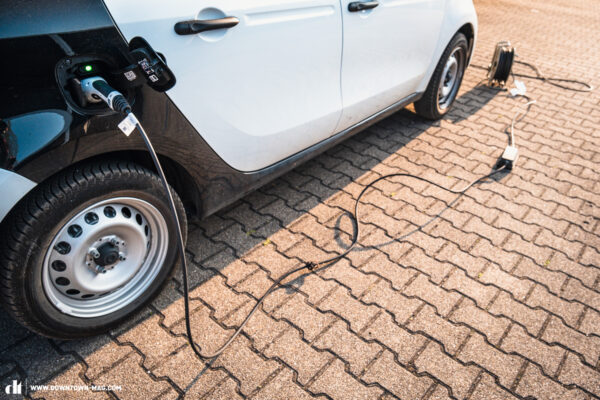

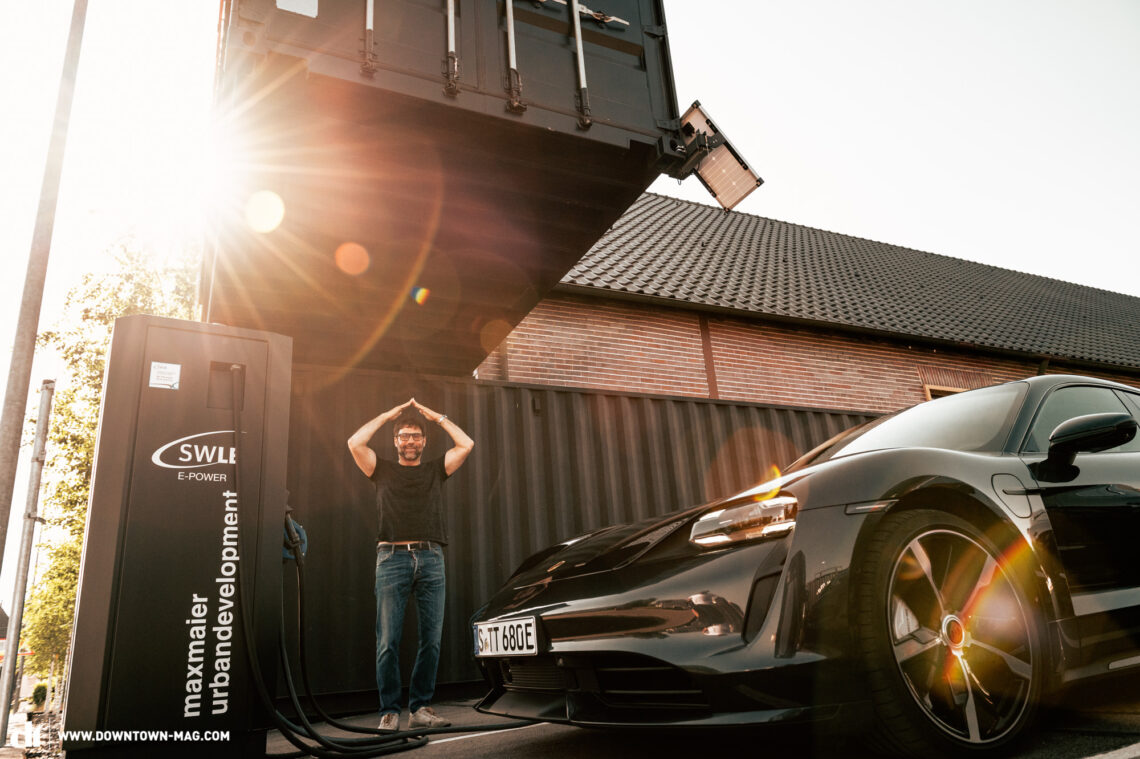
If environmental concerns are the reason you are planning to switch to an EV, we’ve got a whole chapter dedicated to that in this article. We can say in advance, however, the battery isn’t just one of the most expensive components of an EV while also making up a large part of the vehicle’s weight – producing them consumes a lot of precious resources. So, if you’re only going to drive long distances on rare occasions, you should ask yourself whether it’s worth spending a lot more money just to get a bigger battery that you’ll use about 3% of the time, simply dragging around unnecessary weight and resources for the remaining 97%. Or whether you’ll just accept the compromise and get a rental or find alternatives on those occasions when you’re travelling long distances. Of course, this only applies if you don’t own a second vehicle besides an EV. If you’re planning to use the electric car as a second or third option, the above question is irrelevant. The advantage of a big battery is obvious for long-distance commuters: having to charge less often or not at all is a big plus in that case. Moreover, bigger batteries have the advantage that the most efficient charging curve from 10 to 80% capacity is bigger in absolute kWhs than with a smaller battery. In other words, the battery can absorb more kilowatt hours in the same period of time.
It’s not just on long distances that a bigger battery can offer advantages: if you live in a city with limited parking space and you’re reliant on public charging stations that are in high demand, you’ll live a better life, as you’ll have to charge less frequently. One of the cruxes of public charging spaces is that, if you’re parked there for longer than the car needs to charge, you’ll often pay a parking fee. That makes sense because you want to keep the charging stations free for those who need to recharge their electric cars. However, if you live in a congested city and finally find a free charging station after a long day at work, you might have to get up in the middle of the night to park your EV elsewhere once it’s fully charged to avoid paying a hefty fee for blocking the charging station. And then you’ll have to go driving around looking for a parking spot, which can cost you a lot of nerves. Less frequent charging is a big advantage in those situations. If you want to charge your electric vehicle at home using the power generated by your own PV panels, you can also benefit from a bigger battery, allowing you to get through several days without charging in case it’s overcast, and the sun doesn’t come out. That said, we must note that many PV panels don’t produce enough electricity for a home EV charger, so if you want to charge fast, you’ll need to buy additional electricity from the grid anyway. For example, if the on-board charger draws between 3.7 and 22 kW, but your PV panels can produce just 7 kW, you can end up with a difference of up to 15 kW, depending on the car.
It’s important to note that having a garage or parking space doesn’t automatically qualify you to install your own EV charger. You might have to get approval from your electricity provider and from the body corporate if you live in an apartment block.
Since the range of an EV is a lot lower in freezing winter temperatures than it is on a hot summer’s day, it’s better to err on the side of the cold weather range than to be overly optimistic – that way you’ve got a buffer to play with. In climatic zones with big temperature differences between winter and summer, your 200 km summer range can easily drop to 120 km in winter.
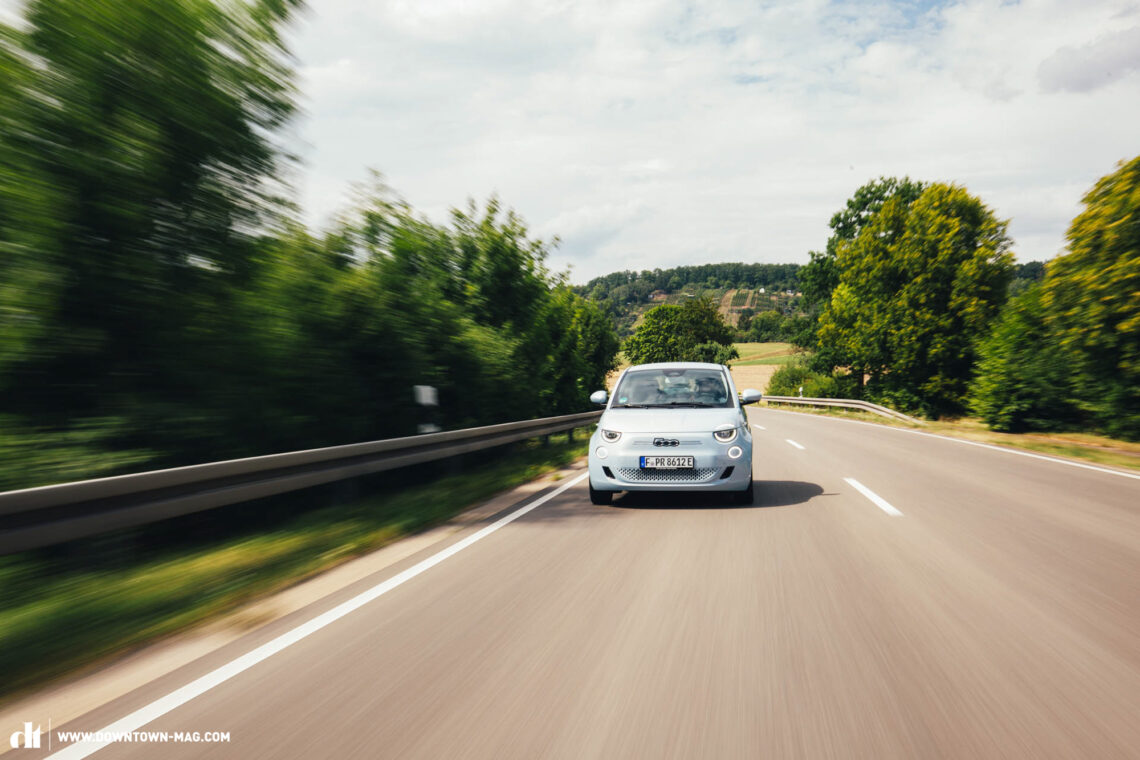
EV navigation systems – New tasks, new demands, and more important than ever!
A good on-board navigation system has always been very helpful, but with an EV, it’s become essential, as having to find charging stations has given it a crucial new task. A good EV navigation system doesn’t just calculate the best route depending on the traffic, but also works out an optimal charging strategy with the best (fast) charging stations along your route. On cars with fast charging technology like a Tesla or Porsche, it also manages the pre-heating of the battery to allow for the fastest charging time possible. Depending on the manufacturer, you can also set the navigation system to get you to your destination with a certain amount of range left. Doing so gives you a buffer and helps reduce range anxiety. It also guarantees that you’ll be able to carry on driving after you reach your destination.

In practice, you’ll find huge differences between the navigation systems in electric vehicles. Some manufacturers have opted to simply use the standard navigation system you’ll find in a combustion vehicle. In that case, charging stations are represented as points of interest that you must integrate into your route, which requires a lot more effort and results in ineffective navigation with unnecessary detours and confusion. Often, they don’t even include the estimated charging time in the ETA calculation, making it difficult or impossible to say when you’ll arrive or how long a certain route will take. VW show how it’s done with the € 45,065 ID.3 Pro. The navigation system automatically includes sensible charging stops along your route if required, in which case it also calculates your arrival time with the time needed for charging. Tesla are still leading the charge in this regard, though the Californian company only include their own, rather expensive, Superchargers.
Instead of developing their own navigation software in-house, Polestar rely on Google Maps: it recognises traffic jams well in advance, and inputting your destination is easy thanks to Google’s refined voice recognition. In case the desired destination is out of range, based on the current state of charge, you get notified that you’ll need to charge the batteries. However, the navigation system will only include the charging stations into your route when prompted. At least the Polestar 2 then calculates the ETA based on the required charging time. As with Google Maps, clicking on the various charging stations gives you further information about their status, charging power and payment options.



Now, you might be tempted to make the premature conclusion that all manufacturers would do themselves and us a favour by relying on services like Google for the on-board navigation. However, doing so comes with one major drawback: no internet = no service. If you haven’t got network coverage, the navigation system doesn’t work, and the well-meaning tips from the voice command lady or chap to ask someone for directions, call a friend or listen to music aren’t much help either. Google Maps does allow you to download maps for offline use so you’re prepared when you haven’t got coverage, which you can do in the Polestar 2. However, the functionality of the navigation system will be limited, nonetheless. Privacy is another aspect to consider – who’s got access to your driving data? There’s the issue of vertical integration with the vehicle, too. Third party software might offer standard application programming interfaces, but that doesn’t necessarily give you the same level of software integration with the manufacturer’s specific battery infrastructure as you can get with purpose-built software. Moreover, it’s got to be compatible with a wide range of different vehicles. While most purpose-built navigation systems can provide basic navigation in case you don’t have network coverage, they, too, often need a working internet connection for more complex and accurate navigation services.

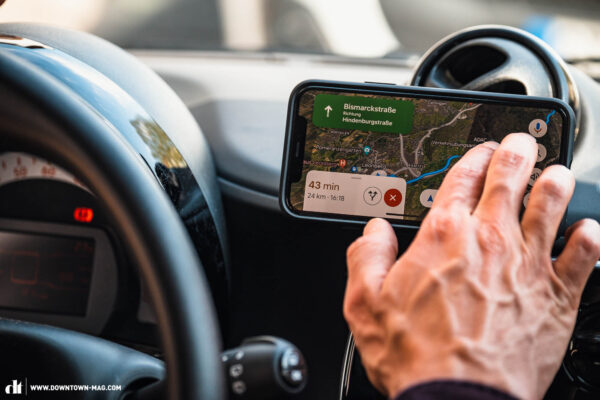
If you primarily drive in the city and hardly or never have to charge while you’re out and about – as with our Smart EQ Forfour – you needn’t worry about having a smart navigation system. You’re unlikely to take the Fiat 500e or Honda e on a road trip through Europe, so the aspect of charging station integration plays a secondary role, depending on your personal use case. The fact that the navigation system in the € 41,200 Honda e doesn’t make charging station suggestions along your route, simply indicating nearby stations, is somewhat disappointing but not necessarily relevant for many potential buyers. What remains annoying, however, is that the navigation system doesn’t recognise traffic jams well enough in advance and fails to suggest alternative routes.
In the case the manufacturer doesn’t provide a satisfactory navigation solution, using your smartphone might be a good alternative. We’re fans of Apple CarPlay, though some features, like zooming in on Google Maps, aren’t available, and there’s no interface between the navigation, vehicle data, and charging stations. So, by relying on this solution, you don’t get range-based navigation, leaving it to you to work out when and where to charge manually. You could also resort to third party apps, like Chargemap or A Better Route Planner (ABRP), which let you plan ideal routes including charging stops. They can even interface with certain vehicle data like the state of charge, for example, which can then also be displayed via Apple CarPlay.
Another important aspect when it comes to navigation is the representation of instruments and signals, like turn arrows in a head-up display, a digital speedometer, a main display in the centre console, or even visual cues via a light bar, as you’ll find in the VW ID.3 – there are lots of options. Ultimately, it’s up to you to decide how much assistance you need and want. That said, the fact that the navigation signals should always be as clear as possible and in the driver’s field of vision goes without saying.
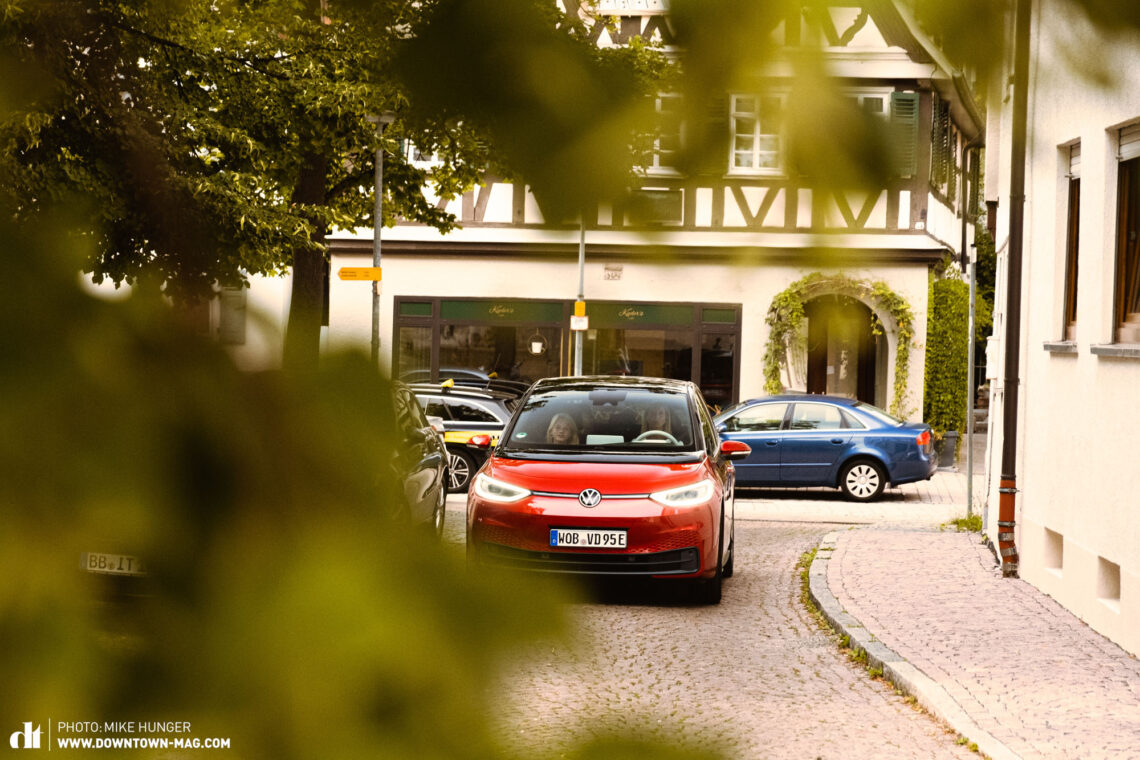

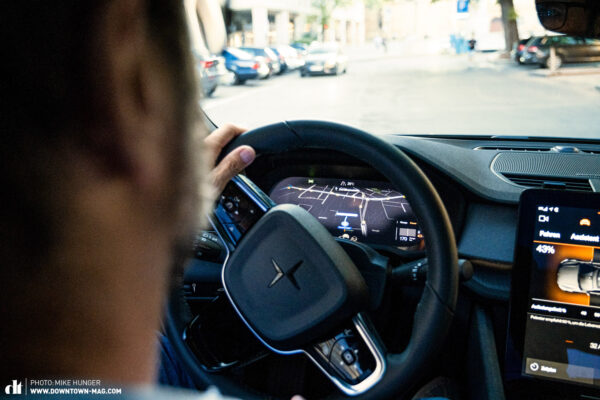
Autonomous driving and the IQ of electric vehicles
Every manager and boss knows how frustrating it is when you delegate tasks and these then don’t get completed or get completed incorrectly. You’ve got to keep following up and checking that things are being done the way they should, quickly making you think that you should’ve just done it yourself. It’s not much different with many of the driver assist functions of the cars on test.


The KIA EV6 responds much too slowly and unreliably, which can’t just result in dangerous situations but also can get expensive, such as when the Adaptive Cruise Control is too slow in adjusting the speed according to a speed limit sign you just passed and a speed camera is already waiting for your licence plate. The Lane Keep Assist of the Fiat 500e is reliable, but it reacts hecticly like a learner driver. On the other hand, the assist functions of the VW ID.3 are smart and refined. The VW doesn’t have any problems recognising vehicles even when you’re going around a turn with limited visibility, sorting them into categories like trucks, passenger vehicles and bicycles, providing a tangible safety bonus when you’re distracted by your kids bickering in the back seat. When you’re using the navigation system, the ID.3 also slows down autonomously as you approach corners and roundabouts. The software takes care of the speed limits, too, capable of reading road signs and even taking speed limits into account that only apply to certain times. The ID.3 then adjusts the speed accordingly and sticks to it, regardless of whether you’re driving up- or downhill. Compared to that, the assistance of the optional € 2,800 Pilot Lite package in the Polestar 2 is rudimentary, unreliable and even distracting in some situations. The Adaptive Cruise Control recognises speed limit signs, but it doesn’t adjust the speed accordingly and doesn’t hold its speed accurately when going downhill, gradually speeding up, which can result in some speeding tickets in the mail. The Polestar’s driver assist system also made mistakes repeatedly when trying to recognise vehicles ahead. As you can see, different manufacturers promise similar functions, though there are big differences in the capabilities and intelligence of the various systems. In short, not all assist functions work equally despite promising the same.
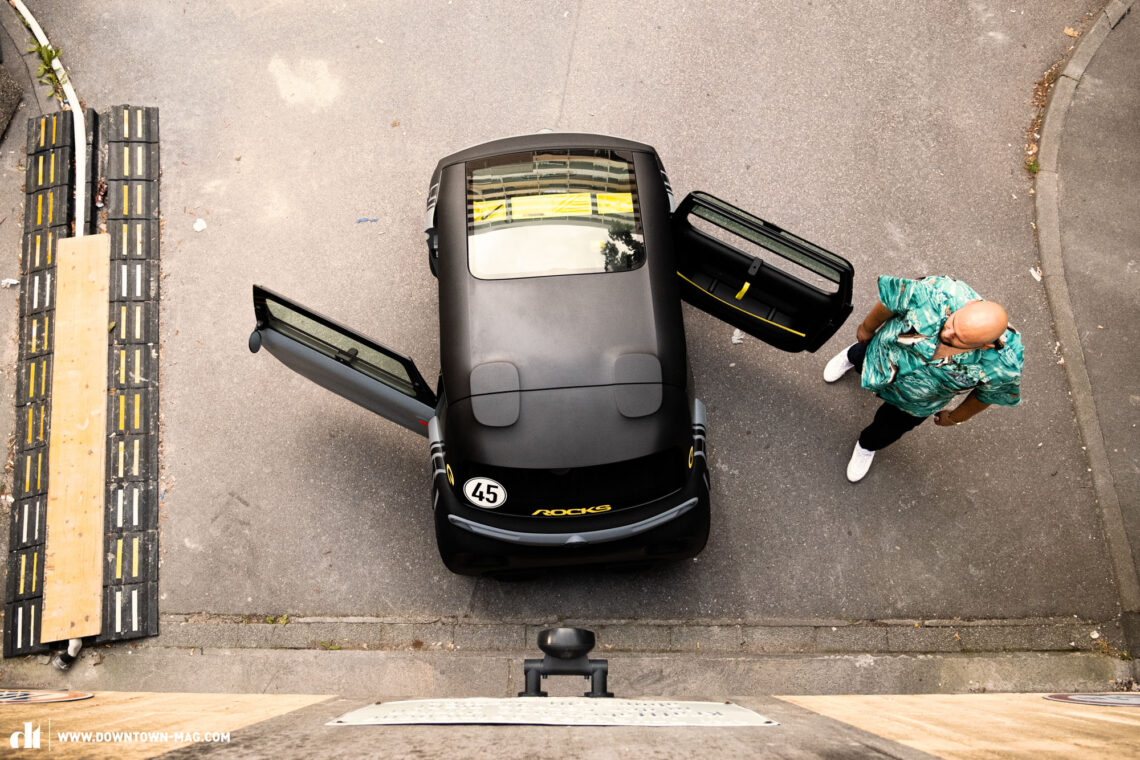
Dangerous distraction or intuitive to use – The differences in the displays of EVs
Large displays are part and parcel of many EVs. Tesla set the trend with the massive display in the centre console with many manufacturers imitating them with a wide variety of similar approaches. However, it’s not the size that counts but the ease of using its interface. Some displays, like those in the KIA EV6, VW ID.3 and the Polestar 2 look cool, but they’re difficult to operate because the menu or app arrangement is overly complicated or unclear. If you haven’t got a co-pilot to help you out, trying to navigate an unclear menu can be distracting and dangerous, as you need to take your eyes off the road for too long as you try to find your way through the menu. Even more so if the display is very reflective.
It’s a basic requirement for the driver to be able to reach all controls ergonomically and that the displays are readable in direct sunlight without producing a glare. Honda and Porsche show how it’s done, providing additional displays for the co-pilots, providing the same functions as on the main display. Combined with the physical buttons for important vehicle functions, this results in a user-friendly interface. If the manufacturer doesn’t offer an intuitive menu in the display or physical buttons for important functions, a reliable voice recognition that doesn’t require predefined phrases can be a great help.
Added to all this is the fact that the light produced by a large display has the tendency to blind the driver at night, or at least strain the eyes. A dimming function, which the Honda e provides via a physical button, is an absolute must.

Eco or turbo? How much power and acceleration do you need from an EV?
If we’re absolutely honest with ourselves about what we actually need while also protecting the environment, then 80% of the electric cars on the market are simply too powerful and hopelessly overloaded with features. And we’re not talking about supercars like the Rimac Nevera with 4 motors that are capable of producing 1,407 kW, claimed to bring the car from 0 to 100 km/h in 1.97 seconds in optimal conditions. Or the new Tesla Plaid generation with 3 electric motors that are also capable of putting out a maximum of over 1,000 kW. No, we’re talking about most standard EVs on the market.
In contrast, electric cars like the Smart EQ Forfour putting out 58 kW or the 86 kW Fiat 500e already provide impressive acceleration, easily capable of leaving most combustion engine vehicles behind in the city. This is down to the fact that electric motors can always apply their torque directly and that most EVs don’t have an (automatic) transmission, saving the time it takes to shift gears.
“From 0 to 100 km/h in 3.9 seconds. That’s smart.” – so goes the advertising slogan of the Chinese made, almost € 50,000 Smart #1 BRABUS, marking a new start of the Mercedes sub-brand’s all-electric future. We don’t think it’s smart at all. Not just because this SUV doesn’t do anything for the future wellbeing of the planet, and the previous, rather sensible Smart models are being discontinued, but also because this kind of performance thinking is outdated. The 0 to 100 km/h comparison has been ingrained into us over the years, though it’s irrelevant for inner city use. Here, the acceleration from 0 to 50 km/h matters a lot more. Driving in an urban environment, you want the car to be zippy, so you can slot into a gap in traffic or pull away quickly at the traffic lights. Electric vehicles are at a natural advantage here, even the models with comparatively weak motors.

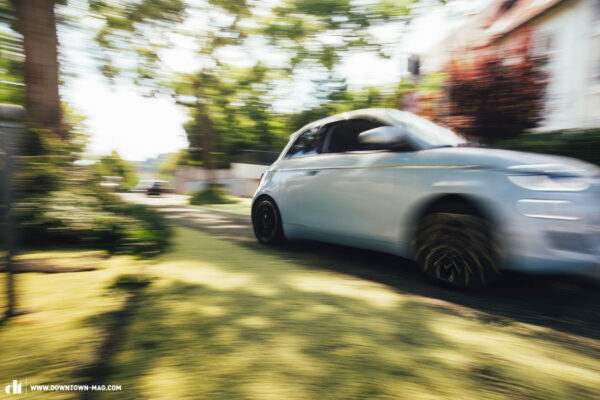
Depending on the load or the number of passengers that you regularly transport, or the steepness of the terrain that you drive in, a small motor is usually more than sufficient. The kind of performance you get from a Porsche Taycan Turbo S, Tesla Model 3, or the Smart #1 BRABUS doesn’t just lead to a stressful experience for your passengers but also gets to your own head. If you put your foot down, it feels like your brain gets slammed into the back of your skull. This can make inexperienced drivers – and above all passengers – feel sick or just unwell. An excess of power can make navigating traffic more difficult for other road users and lead to unwelcome surprises, as distances don’t get judged correctly.
The fact that a lot of power alone doesn’t necessarily add much is evident when looking at the 239 kW KIA EV6 GT-Line, capable of putting out a whopping 605 Nm of torque and accelerating accordingly. Despite the Sport driving mode, it isn’t much fun to drive fast since the suspension isn’t adapted to cope with that much speed and power. As such, the EV6 buckles when stepping on the accelerator, and the handling dynamics of the 2-tonne SUV suffers when trying to take corners at speed.
The Polestar 2 feels a lot more planted on the road and could make for a fun and sporty EV, but our front-wheel-drive model isn’t able to transfer the motor power to the road without spinning the substantial 245/45 R19 tires. A rear-wheel-drive, like in the Honda e, would be a lot more dynamic and fun. Despite being just half as powerful as the Polestar 2, that’s exactly what the Honda e is, and not least thanks to its defined feeling and agile chassis.
However, not everyone wants that kind of handling. Considering the instantaneous power of an EV, a slightly delayed acceleration might be desirable in certain cases. The Polestar 2, for example, has a Crawl mode designed for inner city traffic, in which case the accelerator is a lot less sensitive, increasing driver and pedestrian safety.

The nice thing about a good (electric) car is that you can change the vehicle’s character at the push of a button thanks to different driving modes. It’s important that these are easy to switch between and offer sensible settings. As previously mentioned, the KIA EV6 doesn’t adapt its suspension to match the acceleration and g-forces of Sport mode, rendering the mode largely unusable. On the Polestar 2, you’re limited to adjusting individual parameters like the steering or the sensitivity of the accelerator, but you can’t just push a button to adapt its entire character.
Broken marketing promises or evoking emotions? The soundscape in and of an EV
For many petrol heads, the sound of a large displacement, naturally aspirated combustion engine is more beautiful than Mozart’s “Eine Kleine Nachtmusik”. That’s why Ferrari have even patented amplifying systems to protect the characteristic sound of their motors. The chugging of a V8 might not be to everyone’s taste. However, it’s undeniable that it has a high recognition value and results in a certain driving experience. With an EV, the sound it emits isn’t just important in terms of safety but also for the value perception, brand recognition and emotions that it elicits when you drive it. But you’ll find big differences between how current EVs sound. To pedestrians, the VW sounds like a low-flying spaceship, but it’s quiet on the inside. Fiat give the 500e an entrance worthy of the big screen as it plays an aria, though the remaining sounds it produces are rather disappointing: it chimes like an elevator when turning on the motor, which just doesn’t fit the concept. With the Polestar 2, the reserved and somewhat high-pitched driving sound seems completely out of place, and the indicators and central locking sound cheap. Ultimately, the soundscape of the Polestar 2 doesn’t live up to the brand’s high-end image. How did the designer Charles Eames put it? “The details aren’t the details. They make the design.” We say: the sound is not just the sound – it influences the value perception of the entire vehicle.

Porsche show how manufacturers can bank on the emotions elicited by the sound of an electric car: for a hefty € 500, you can get the optional Porsche Electric Sport sound for the Taycan. This artificially produced sound is linked to the motor, resulting in a futuristic motor sport feeling, all without cylinders or a twin turbo. Combined with the gear changes of the 2-speed transmission at the rear, it amplifies the feeling of accelerating and braking acoustically, resulting in a genuine motor sport experience like you know it from combustion engines, though with something of the Star Trek Warp sound twist. With the EV6, KIA even let you choose from a range of e-sounds as standard.
New features, new possibilities – The special features and peculiarities of EVs
Progressive manufacturers are developing and reinterpreting EVs from the ground up. Of course, they’ve still got four wheels, but the use of electric motors and a battery opens new possibilities in design and interior layout. The huge on-board battery also paves the way for a wide range of new use cases. Below, we’ve listed several features that you can look for:
Power outlets and Vehicle-to-Device (V2D) technology:
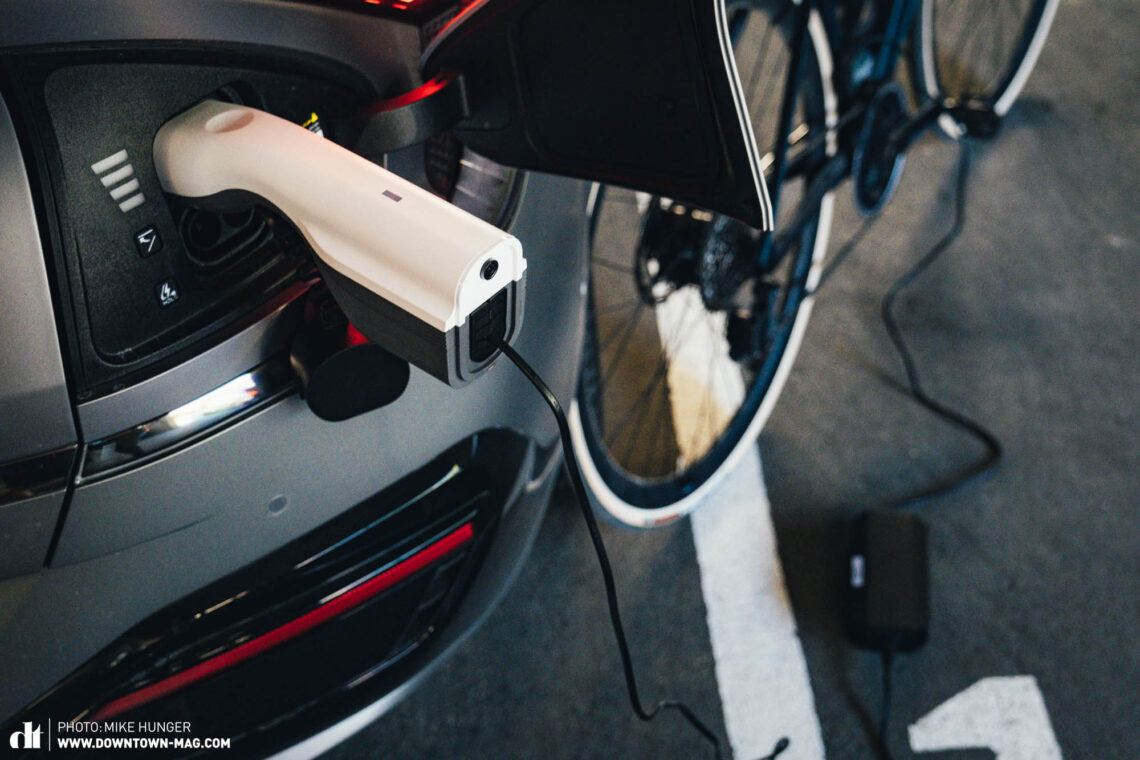
So, you’re late and didn’t have time to blow-dry your hair? How about charging your laptop while you’re on your way to a meeting, or charging your ebike as you drive to the trails or at the campsite? Some electric vehicles like the Honda e or the KIA EV6 have a 230 V power outlet on the interior of the car, which can be very convenient. The KIA EV6 takes this one step further, allowing you to turn it into a mobile power bank with the help of an adapter, capable of producing a current of 3.6 kW. The 230 V outlet in the Honda e can produce up to 1.5 kW.
Tow hitch on an EV
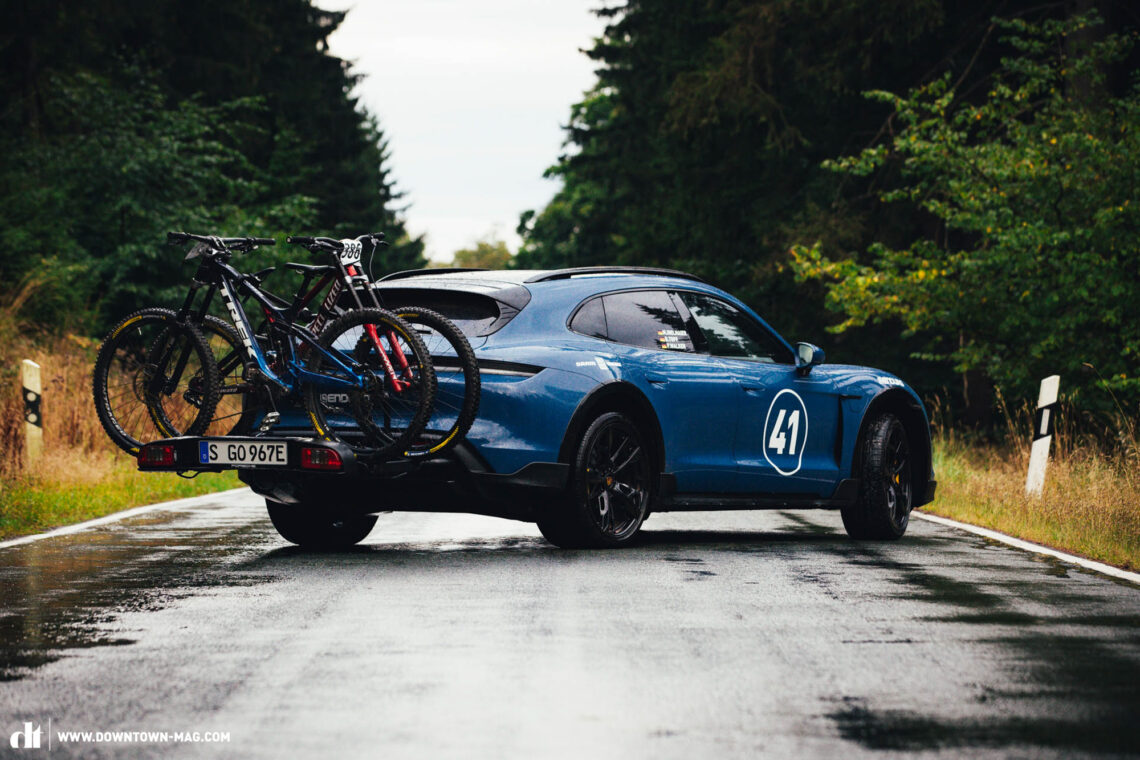
Whether it’s to pull a trailer or attach a bike rack, not all EVs are available with a tow hitch. If this is something you need, you should definitely find out if you can get it as an optional extra or have one retrofitted before deciding what to buy. For example, the position of the battery on the Porsche Taycan makes it incompatible with a tow hitch, though you can get a purpose made, in-house rack with special mounting points – if you’re willing to fork out an additional € 1,900!
The frunk of an EV

Since EVs don’t have large internal combustion engines, many electric cars have an additional yet rather small luggage compartment in the front, which you can use to stow items that you don’t need that often or that need to remain easily accessible, like the charging cable. That way you don’t have to keep the charging cable in the trunk where it can get lost amongst your other luggage or make everything else dirty when you must charge in grimy weather conditions. A front storage compartment is especially convenient when charging at public locations in the inner city. By the way, the term frunk is a combination of the words front and trunk.
Key alternatives – Keyless or app

Regardless of whether you’re wearing a summer dress or a sports outfit, there are times when you can’t or just don’t want to lug a key around. Fortunately, several manufacturers have developed smartphone apps that you can use to unlock the vehicle. Ford have taken the concept one step further, integrating a keypad in the driver door of the Mustang Mach-E, allowing you to go keyless and phoneless. Cool!
Heat pump in an EV

A heat pump can increase an EV’s range by as much as 30% in the winter, depending on the make of the car and the size of the battery, of course. If you do a lot of driving in the winter or in cold temperatures, it will be worthwhile paying extra for the heat pump upgrade, if available. A heat pump works like an aircon, just in the opposite direction, usually capable of generating 3 to 5 times as much heat as the electricity it consumes and thereby placing significantly less strain on the battery than a standard electric heater.
Interior layout
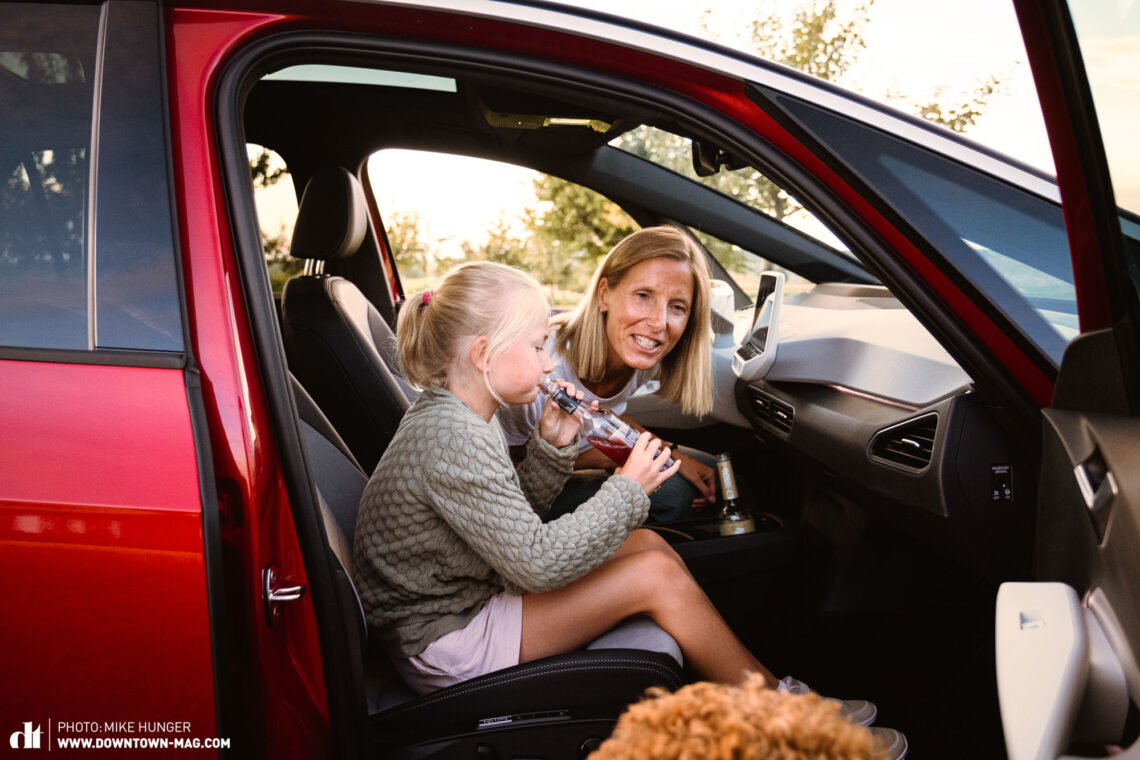
Thanks to the flexible architecture of the battery and the decentralised position of the motors, negating the need for certain transmission and driveshaft components, designers have a lot more flexibility with the interior layout, which allows them to create more room if used cleverly. Many EVs have more storage options in the centre console, or even a removable centre console, increasing modularity and providing a higher level of customizability. However, this can allow objects to roll from the front passenger seat under the driver’s feet, as in the Hyundai IONIQ 5.
Over the air updates – New functions und features
It’s something you’ll be familiar with from your smartphone, laptop, or digital camera: as soon as you’ve updated the software, you’ve suddenly got new features and possibilities. It’s similar with EVs, and many of them are capable of more than what’s unlocked when they get shipped. That might be due to the fact that some of the functions are still in the beta phase. For example, when you buy a Tesla, they point out the possibility of upcoming functions. Once they’ve worked out all the bugs, the function can get unlocked via an over-the-air update (OTA). Several manufacturers, including Audi, BMW, Mercedes, and Porsche, offer what they call Functions on Demand. These are paid for extras, ranging from better navigation to real-time traffic updates, automatic high-beam functions, Park Assist, and motor sound tuning. OTA is important for software compatibility, too, or to keep the software up-to-date. Some don’t like OTA because it can force updates on users that they just don’t need or want, and it can do so without prior notification or warning. Tesla have often been criticised for providing updates that resulted in reduced range or longer charging times. That said, most updates provided by the Californian brand include sensible new features that add value.
Driving an EV with a clear conscience – About greenwashing and the dangers of a new image for EVs

Plug-in hybrids are out – how long will EVs still be on trend?
There’s no question about it, EVs give us a clean conscience. They’re considered pioneers of the energy and mobility revolution, and they’ve got a positive image in the eyes of most of the population. And while a large portion of the automobile industry was against the electrification of cars just 5 years ago, it’s clear where public policy and the automotive industry are now heading: e-everything. Claiming, of course, that turning everything electric will make it better. Over the last few years, this has resulted in us being overly quick to categorise the world according to good and evil. Internal combustion? Evil! Plug-in-hybrid? Good! Fully electric? Brilliant! The interesting thing about it is that it doesn’t matter what kind of category the vehicle belongs to, as long as it’s got an “e-” slapped onto it, it’s one of the good guys. But this image has started to change as people become more critical of plug-in hybrids, making them lose their good image in the course of just two years.
The communication surrounding EVs is changing too. A few years ago, you would have heard things like, “if we want to slow down climate change, we must make the switch to electric cars”, “EVs make the world a better place”, and “mobility with a clean conscience”, but these green promises are getting quieter. Some manufacturers have already started removing all mention of sustainability from their marketing campaigns.

Without a doubt, EVs do have benefits, like locally emissions-free driving, less noise pollution, and less fine dust produced by the brake pads thanks to regenerative braking. But even if manufacturers and politicians try to convince us otherwise, the sobering truth of the matter is that EVs will not save the world. You can’t just ignore the resource-intensive production and the short life cycle of high-tech vehicles, along with the typical downsides of an automobile. Added to this is the carbon emissions certificate trade, which many stakeholders benefit from, except the environment. Below, we’ll clear up many of the risks but also opportunities associated with EVs because the good thing about humanity and the world isn’t our perfectionism, but our ability to learn and ultimately do things better. #evolutionbaby!


Keep it simple! A lot of EVs are more complicated than the Berlin airport!
One of the biggest automotive trends is connected mobility, which is touted to be the solution to urban congestion, promising fewer traffic jams, improved safety, and higher efficiency. Before achieving any of that, however, it creates new problems relating to sustainability, significantly increasing the number of circuit boards, sensors, controllers and just the sheer amount of electronics and hardware needed to run the software. Pretty much all manufacturers are already struggling to provide bug-free software and are unable to guarantee that it won’t crash. Modern EVs easily have around 70 different controllers that must communicate with each other, yet they often rely on different software to do so. In case any of these devices needs to be updated, it can have a direct impact on the functionality of the rest of them, or at least on their ability to communicate and work in unison. The biggest danger of all this is that we’re creating a digital infrastructure that hardly anyone understands. If you want proof of the fact that increasing complexity can be devastating even in the analogue world, just look at the Berlin airport.

The true scale of the complexity involved can be seen at VW: they’ve got around 4,500 employees working at the VW offshoot Cariad, trying to develop an overarching software platform that can be used by all passenger vehicles belonging to the VW Group. And despite investing huge sums of money, they’ve had to delay the launch of new products purely because their new operating system VW.OS, and the Volkswagen Automotive Cloud still aren’t working the way they should.
When will we see the first circular car? The circular economy
The reduction of animal products and the move towards more recycled materials can definitely have a positive impact on the environment, as long as it doesn’t push up the consumption of energy and resources. Ultimately, however, the initial energy and resource consumption required to produce an EV is less important than its life cycle, durability and repairability. EVs might have fewer mechanical components that suffer wear and tear and require regular maintenance, but it’s the digitalisation that’s their downfall: high tech EVs are like smartphones, they don’t age well. Due to the rapid development of digital tech, smart products don’t stay in use for very long, because they just can’t keep up-to-date with the latest tech. A software update won’t help if the computing power of your current hardware isn’t enough to support the latest features. While this used to be limited to computers and the IT sector, it’s now affecting more and more aspects of modern mobility.

A modern car has a life cycle of around 8 to 10 years, whereas consumer electronics like smartphones have a life cycle of just 2 to 3 years. And the latter sets the benchmark, as this is the expectation consumers have been taught to have of tech products. As an automotive manufacturer, you’re torn between offering on-trend functions and future-proof infrastructure that allows for seamless integration while meeting your customers’ expectations. Of course, OTA updates can keep EVs up to date with the latest tech for a certain period of time, but only for so long as the hardware can support these developments.
The circular economy is seen as a key step towards more sustainability, but we’re far from being able to completely recycle electric cars. Even the question of what happens with EV batteries at the end of their life remains to be answered. Honda, amongst other manufacturers, want to reuse old EV batteries for stationary applications. Most manufacturers promise a battery life cycle of 8 years or approximately 160,000 km before it drops below 70% of the original capacity.


Threats facing the EV industry – Will the image of EVs change?
Tesla, Rivian, Polestar, Mercedes – there are hardly any manufacturers who don’t promise a better future. Yet, none of their actions align with their words. An EV is a resource-intensive product, requiring plenty of rare earth elements, and other finite materials that are energy intensive to extract. That’s not the only reason why EVs are so expensive. It’s also because there’s such a big demand from premium vehicles with a sustainable image and that these models are often a lot more lucrative for manufacturers. Ultimately, our roads are getting flooded with overbuilt electric SUVs and electric cars that are much too powerful, consuming several times more resources than is necessary. And they’re capable of significantly more than most of us need or even want. This doesn’t just apply to premium brands but to almost all established manufacturers. For example, VW are focusing heavily on the rather large ID.3, and ID.4, etc, instead of the likes of the e-up!, which is far more practical in an urban setting. Smart have discontinued the very sensible EQ Forfour in favour of the new Smart #1 electric SUV, hoping to position themselves in the premium segment – small and sensible seems to be out. As such, the market is losing focus of the original reasons and arguments for making the shift to e-mobility in the first place. The drive unit might have changed, but not the vehicle size, complexity and resource consumption. On the contrary: the current arms race around battery size, features and vehicle size is resulting in hulking electric SUVs, electric limousines, and electric trucks like the Rivian RT1, Mercedes EQS SUV, BMW iX, Ford F150 Lightning, Volvo EX90, Polestar 3, and the Tesla Plaid models. The absolute cherry on top of this arms race is the GMC Hummer EV Pickup, putting out over 1,000 kW and weighing more than 4.1 tonnes, which must be moved around electrically. Of that weight, 1.3 tonnes comes from the 212 kWh monster battery alone. Of course, it’s a road legal EV, and we’re sure it’s loads of fun to blast around in through the hood or prairies. Nonetheless, it makes a complete farce of the mobility revolution. How much more absurd can you get than going shopping in a tank, or carting an 80 kg human around in a 4,000 kg vehicle? The fact that you’re doing so with a battery driven electric motor can’t compensate for these actions either. It’s got nothing to do with sustainability or revolutionising energy and mobility, as it’s simply making wasteful and excessive consumption of energy and resources a little more socially acceptable. With over 70,000 pre-orders already placed for the new electric Hummer, it’s clear that this isn’t some niche product or phenomenon but something that will have a real and lasting impact on the planet.
EVs still have a positive image and get the benefit of the doubt, but the automotive industry is well on its way to destroying this with its bigger, better and more exclusive product policy, forgetting the promises it made, the goals it set, and the slogans it used when this all started out. You can’t speak of a better, more sustainable, less-resource intensive future while producing more resource-intensive, complex and bigger vehicles. The EV industry should watch out for the pendulum that’s bound to swing back.
The manufacturer’s claims:
Mercedes-Benz: “From recycled plastic to renewable raw materials – with more than 100 sustainable components, the design philosophy of the EQC conveys the idea of modern, sustainable luxury.”
Audi: “E-mobility is the key to more sustainable global mobility. For us, it’s the central element of a more sustainable and climate-friendly transport system.”
Volkswagen: “Future mobility that isn’t just electrifying, but also sustainable.”
KIA: “We want to let you make an emotional connection with our vehicles, our brand, and maybe even with nature.“
Smart: “Cars can be good. 100% electric. Zero local emissions.”
Where’s the balance?
The mobility revolution is about far more than the switch from internal combustion engines to EVs. It’s about rethinking mobility from a global perspective and acting locally. Each and every one of us has an important role to play in it. Not by blindly consuming too much or ideologically depriving ourselves, but by finding the right balance. The climate doesn’t care about borders, and people’s mentalities, awareness and needs are far too diverse for a one-size-fits-all approach. Commuting distances are generally very different in North America than in Europe, just like our relation to resource consumption. Which is why many of the large electric vehicles weren’t developed for the European market, but for the US or Asia.
We must ask whether we can expect the industry to stop producing and selling premium EVs that consume far too many resources. And that they simply ignore demand for these, leaving the market open for other players to fill the gap? Probably not. The fact is that these excessive premium vehicles are good for business. However, the frustrating part of it is that many of the established companies aren’t even trying to develop small and practical solutions for the city. As such, the promises made by automotive giants are yet to turn into anything more than, well, hot air… For example, as part of their latest strategy change, Mercedes have decided to discontinue all their “smaller” vehicles in an effort to focus more on the premium and luxury segment. We’re seeing similar tendencies from more and more manufacturers. As a result, the individual mobility of the future will become an unaffordable luxury, reserved for the elite. Will this result in fewer cars on the road in the mid-term as a socially questionable byproduct? We will see.
We’re a lot more excited about the efforts from start-ups and newcomers to the market that are working on new forms of urban mobility. For example, we can’t wait to see how resourceful concepts like the cute and cool Microlino get adopted by the market. Will the industry and politics find a balance that the market will accept? Only time will tell.
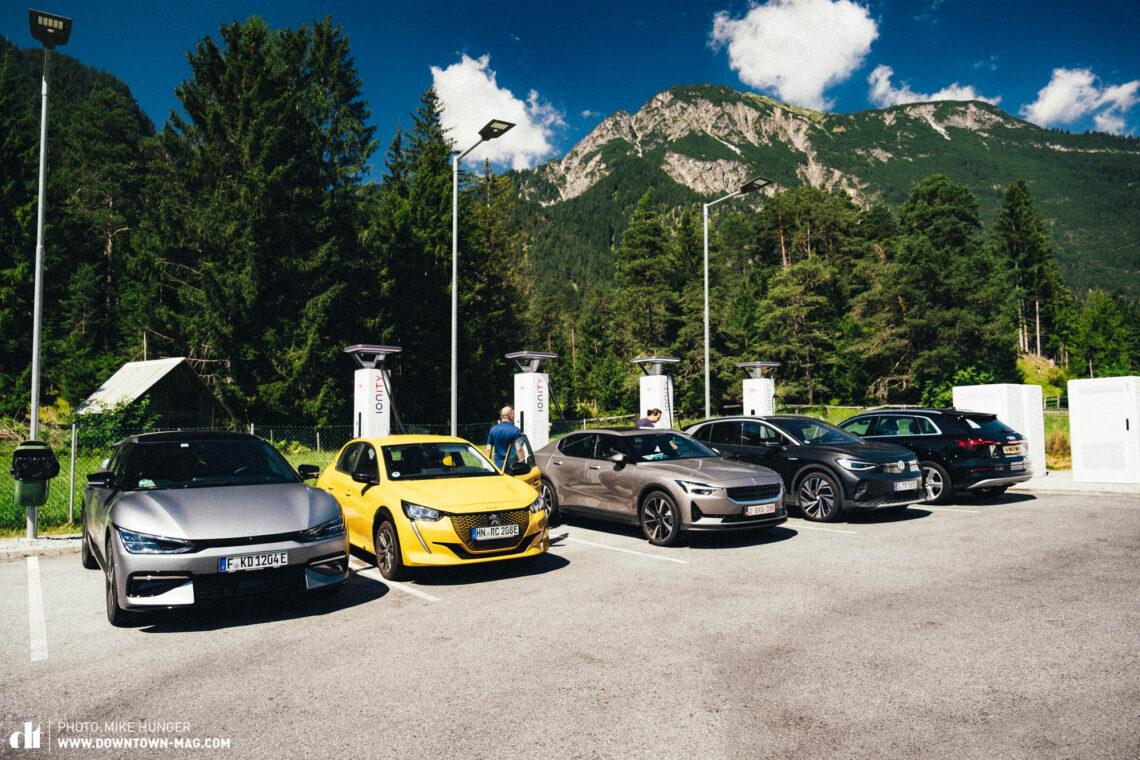
Conclusion
The EV market is big and diverse, and since we have an equally big and diverse readership with a wide range of needs and mentalities, we’ll cover the full spectrum of EVs. Our goal in doing so is clear: to provide an honest buyer’s guide, realistic reviews, and zero tolerance for sugarcoating or greenwashing. Whether or not an electric car is the right choice for you depends on a range of variables and conditions, which we will impart to you in our free, personalised buyer’s guide. However, if there’s just one piece of advice we can give you, it’s to not let yourself be dazzled by superlatives or features that don’t necessarily work as advertised or don’t serve any of your specific purposes.
All tested e-cars: Fiat 500e (Click for review) | Honda e (Click for review) | KIA EV6 (Click for review) | Opel Rocks E (Click for review) | Polestar 2 (Click for review) | Porsche Taycan (Click for review) | Smart EQ Forfour (Click for review) | Tesla Model 3 | VW ID.3 (Click for review) | VW ID.Buzz (Click for review) | Volvo EX30 (coming soon)
Words: Robin Schmitt Photos: Mike Hunger, Robin Schmitt, Peter Walker, Simon Hänle, Valentin Rühl


